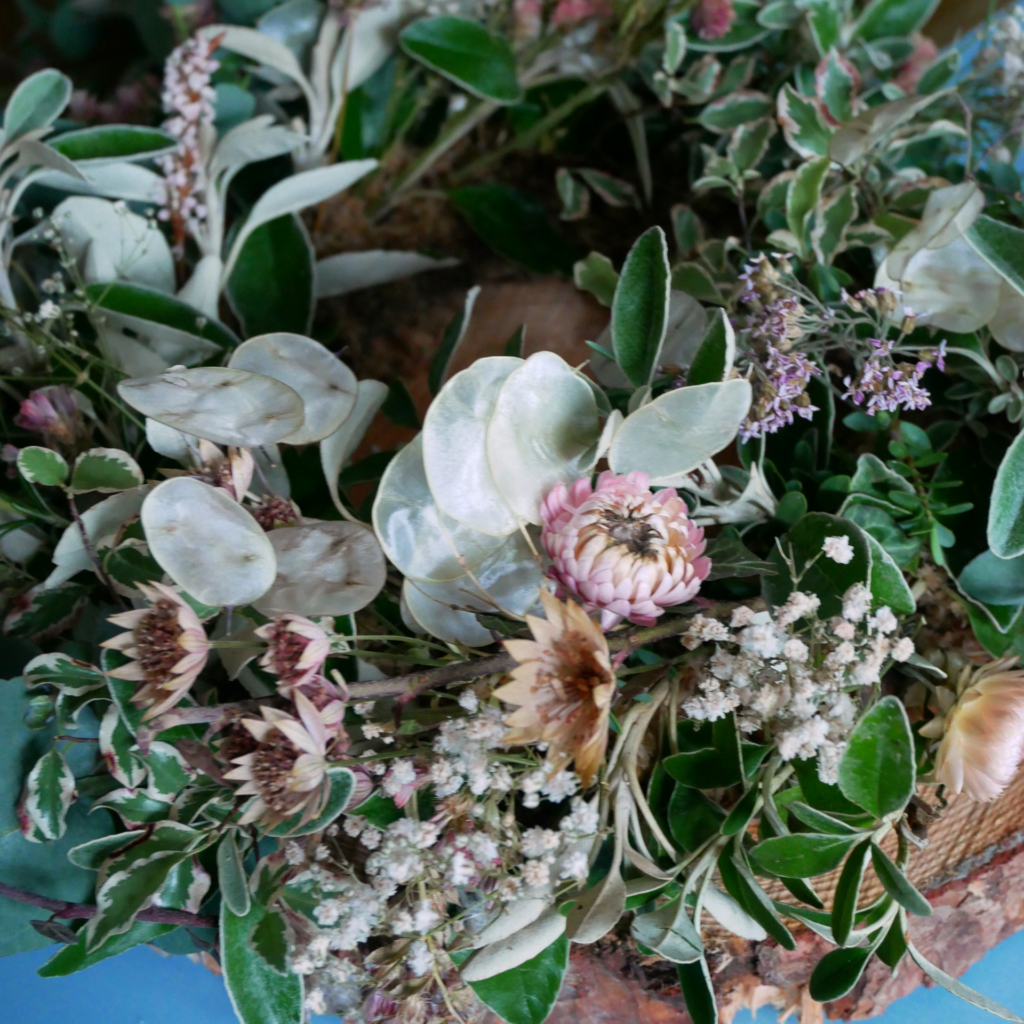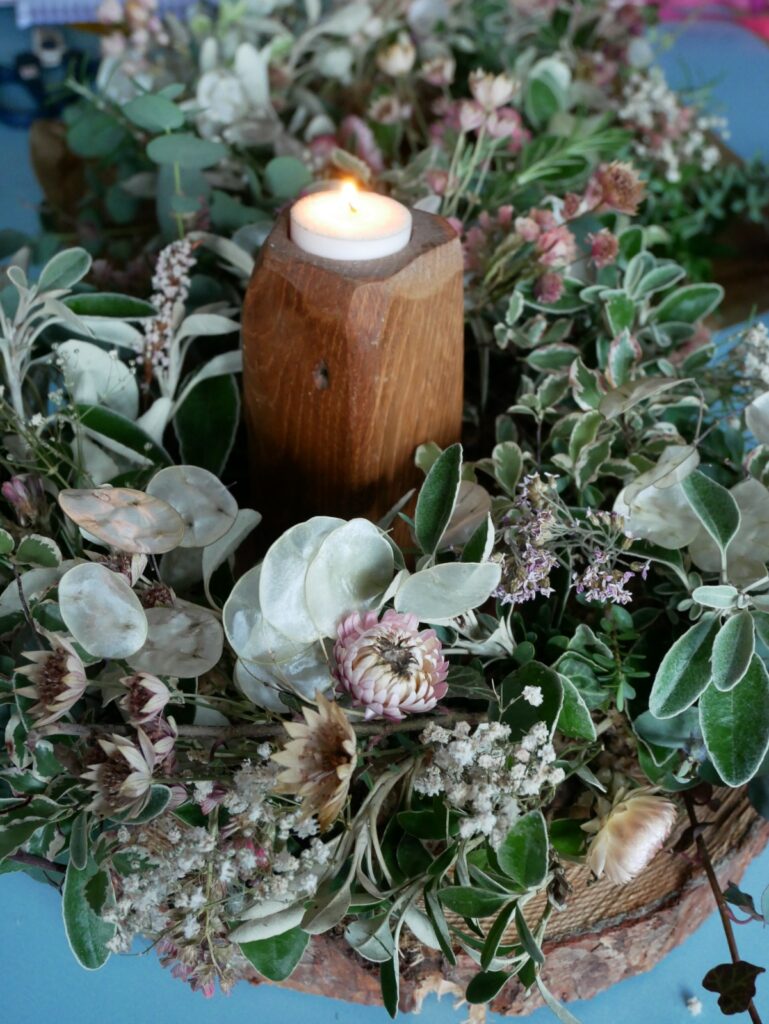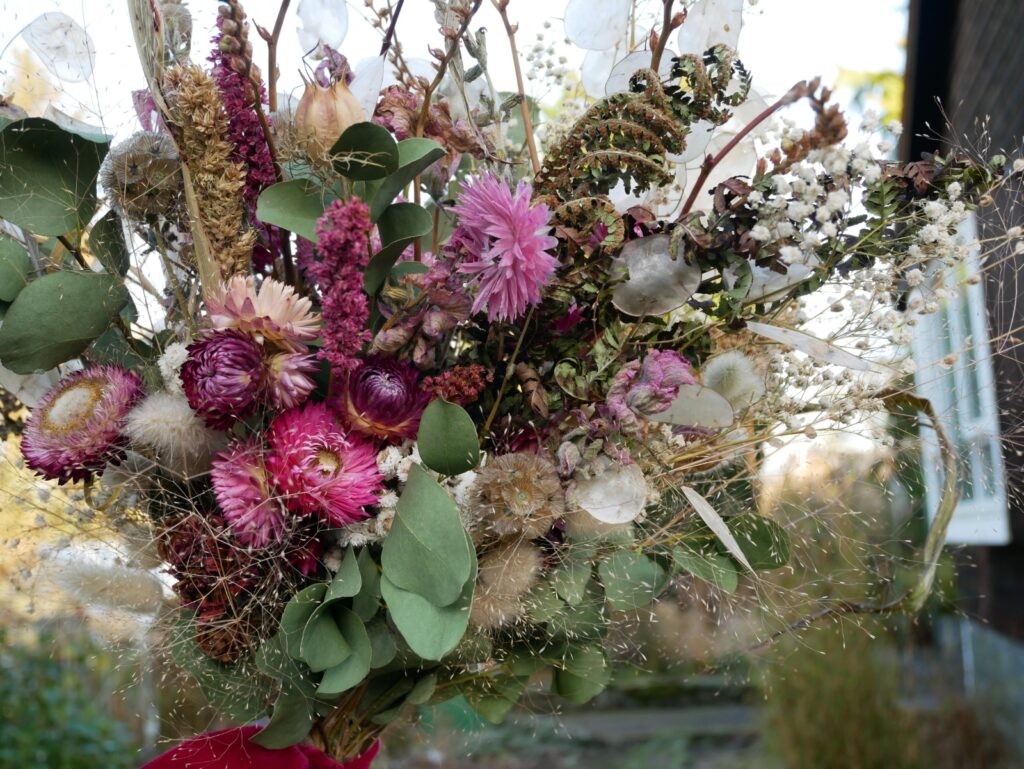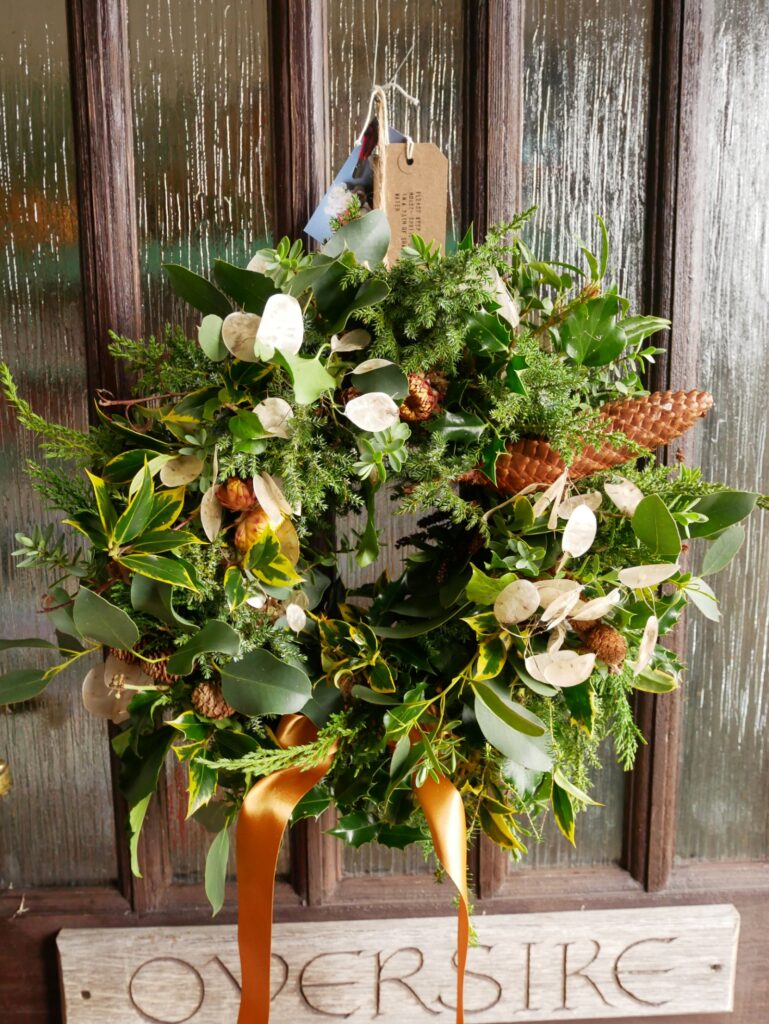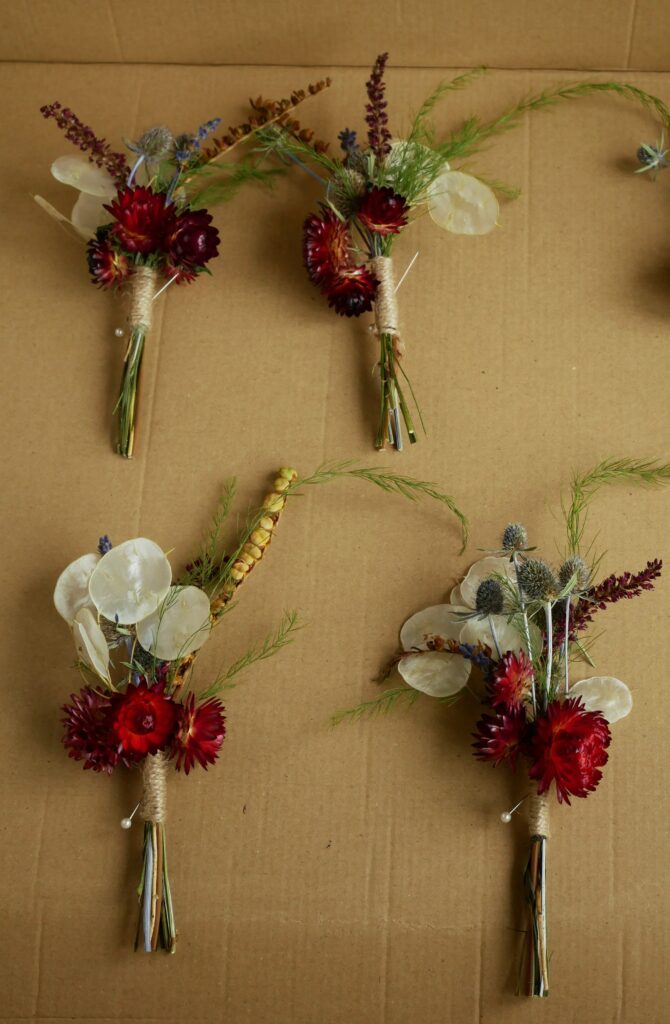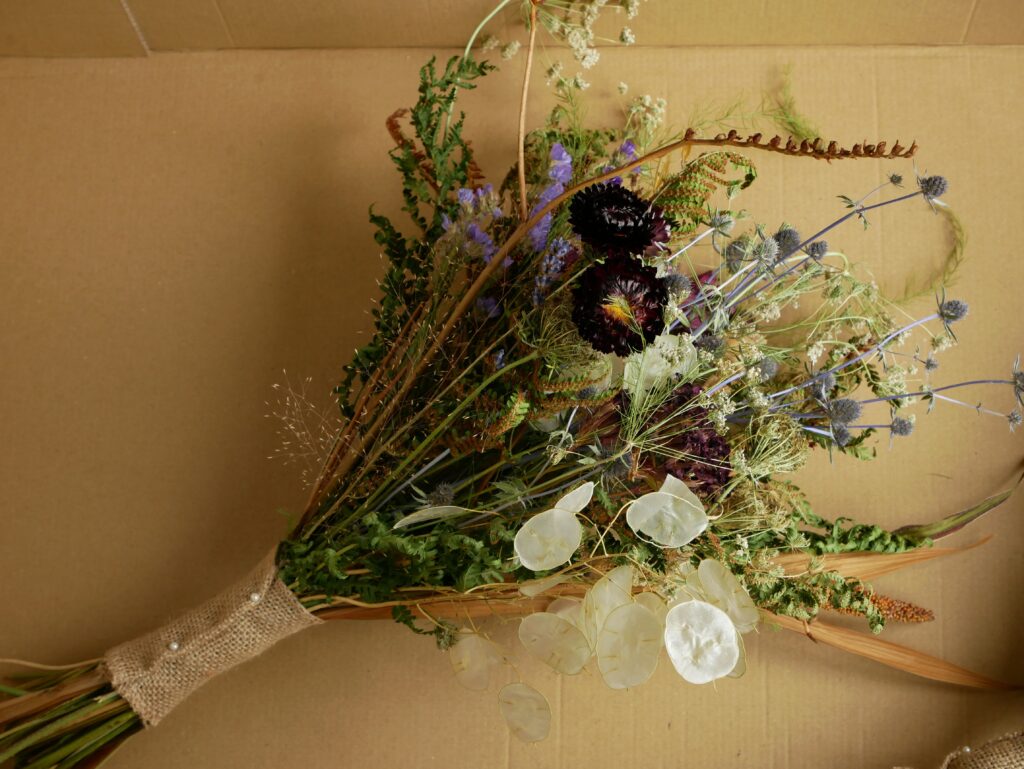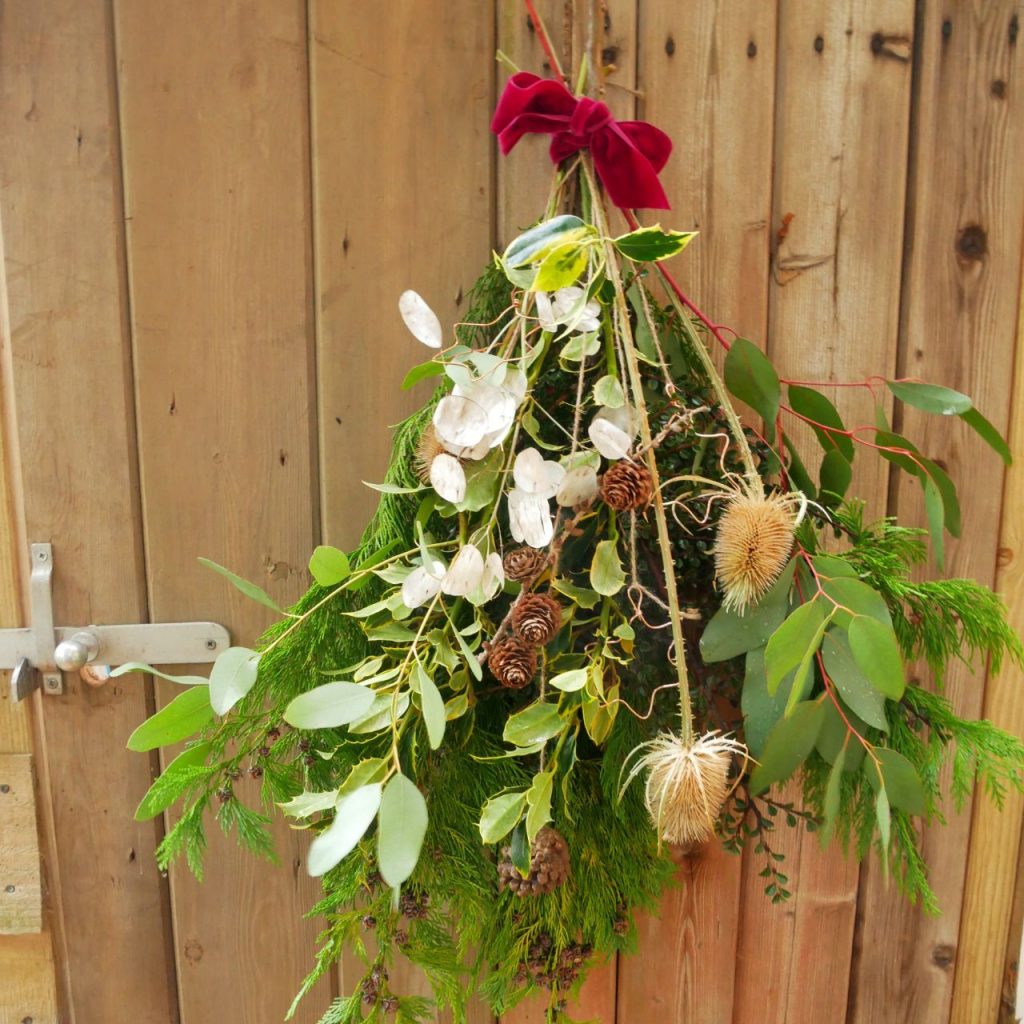You might be surprised how the seasons vary as to where you are in the UK – for example, a Cumbrian Spring can be quite different to a Cornish one (which is why I order flowers from other British growers, often further south!). As the climate is not as stable as it used to be, and the seasons are shifting.
This post covers my main growing seasons. During January and February, I have limited flowers but do feel free to get in touch if you’re looking for something!
I don’t always grow the same flowers each year so to receive regular updates from me, about what’s currently growing/flowering; please sign up for my emails. The link is at the foot of this page.
January and February
This time of year, there are occasional special early flowers, but we’re looking more at evergreen foliage, twigs, and maybe using dried flowers. It’s a quiet time in the cutting garden but a lot going on beneath the soil! The main season for my cutting garden is between March and October.
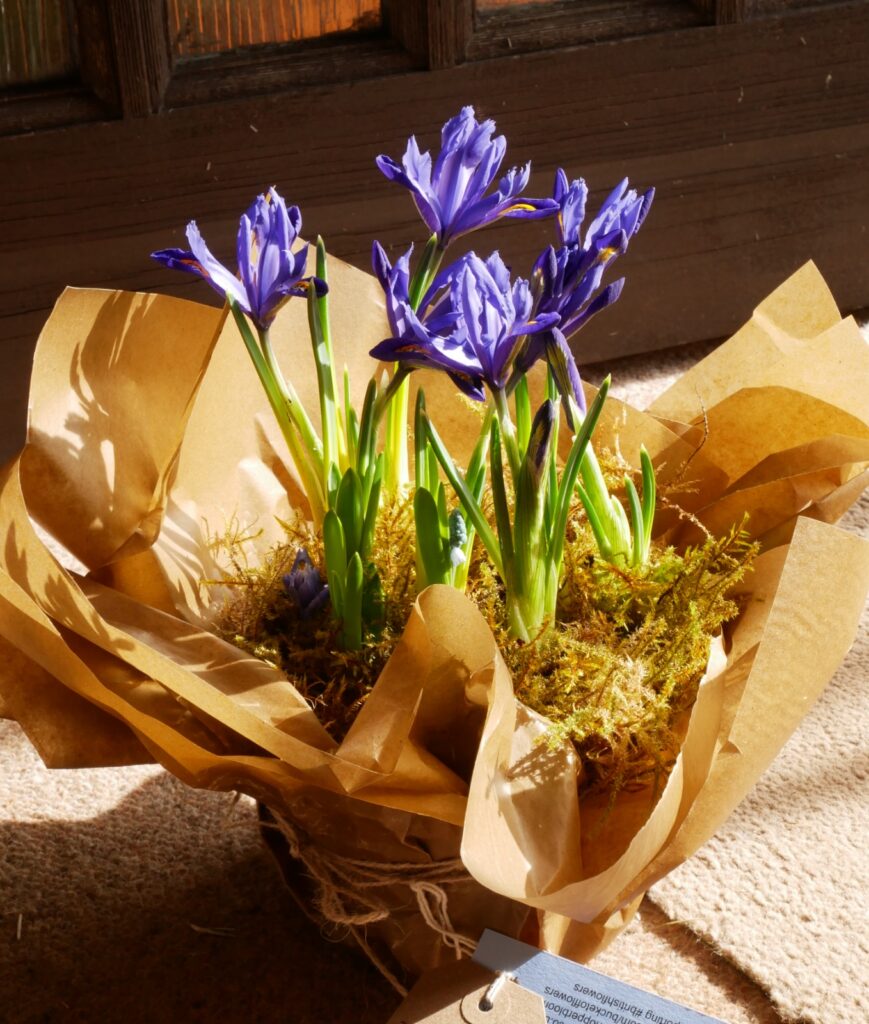
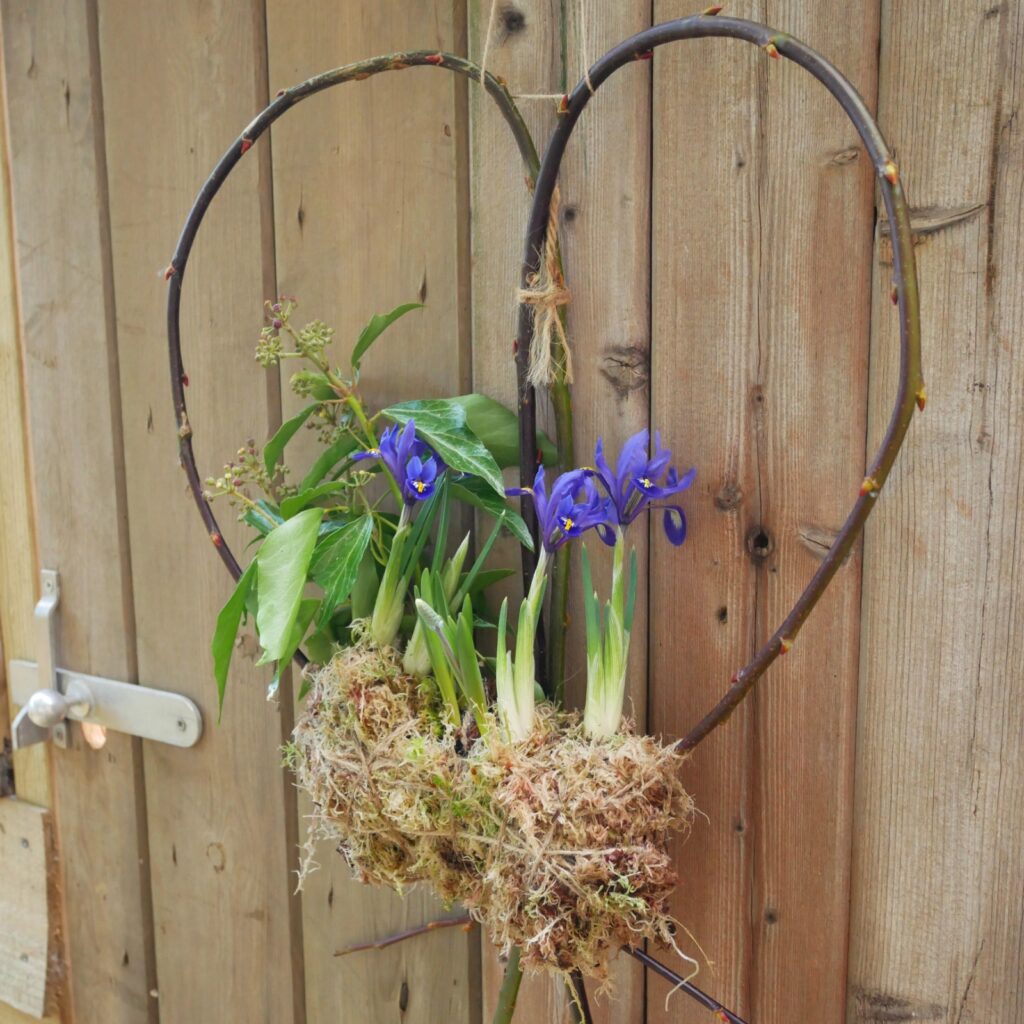
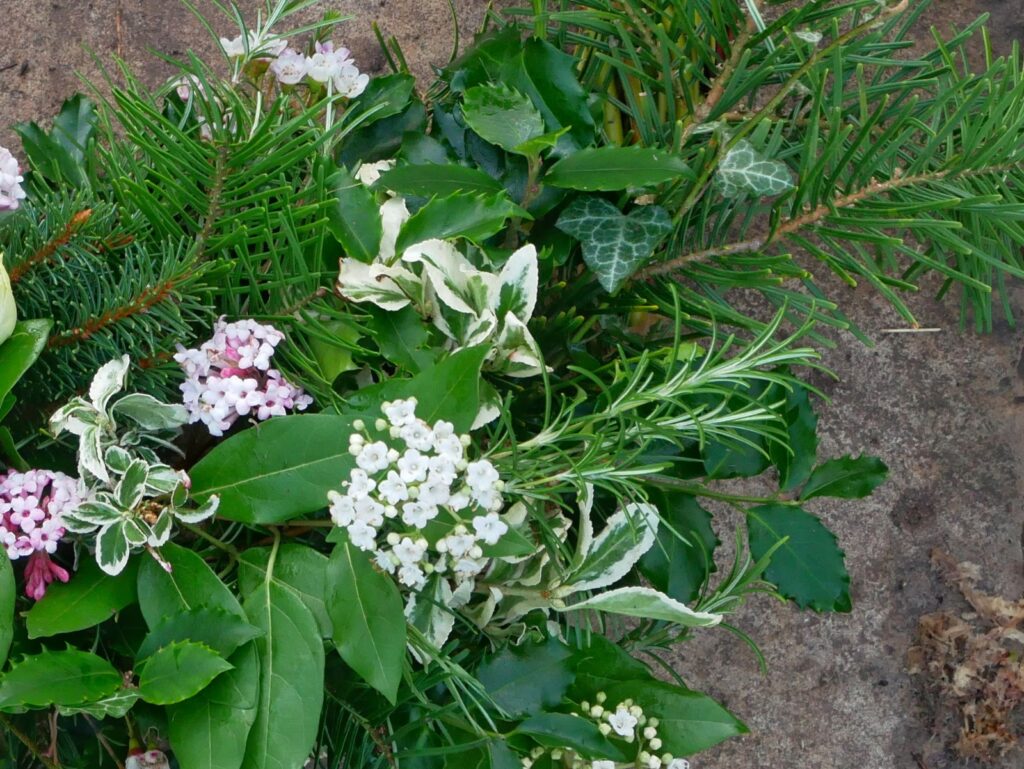
March
It’s Narcissi time! Narcissi (Daffodils) come in many forms; different colours, heights and shapes. Perfect for weddings, Mothering Sunday and bringing a bit of cheer and hope after the Winter months. Can be paired with wonderful coloured twigs, evergreens and maybe some pussy willow, muscari, as well as potted miniature iris. Late March will have a lot more choice of flowers than early March, as the daylight hours start to lengthen again.
Flowers for March may include:
Narcissi, pulmonaria, muscari, iris reticulata, heather, flowering currant, cornus (twigs and flowers) evergreen foliage.

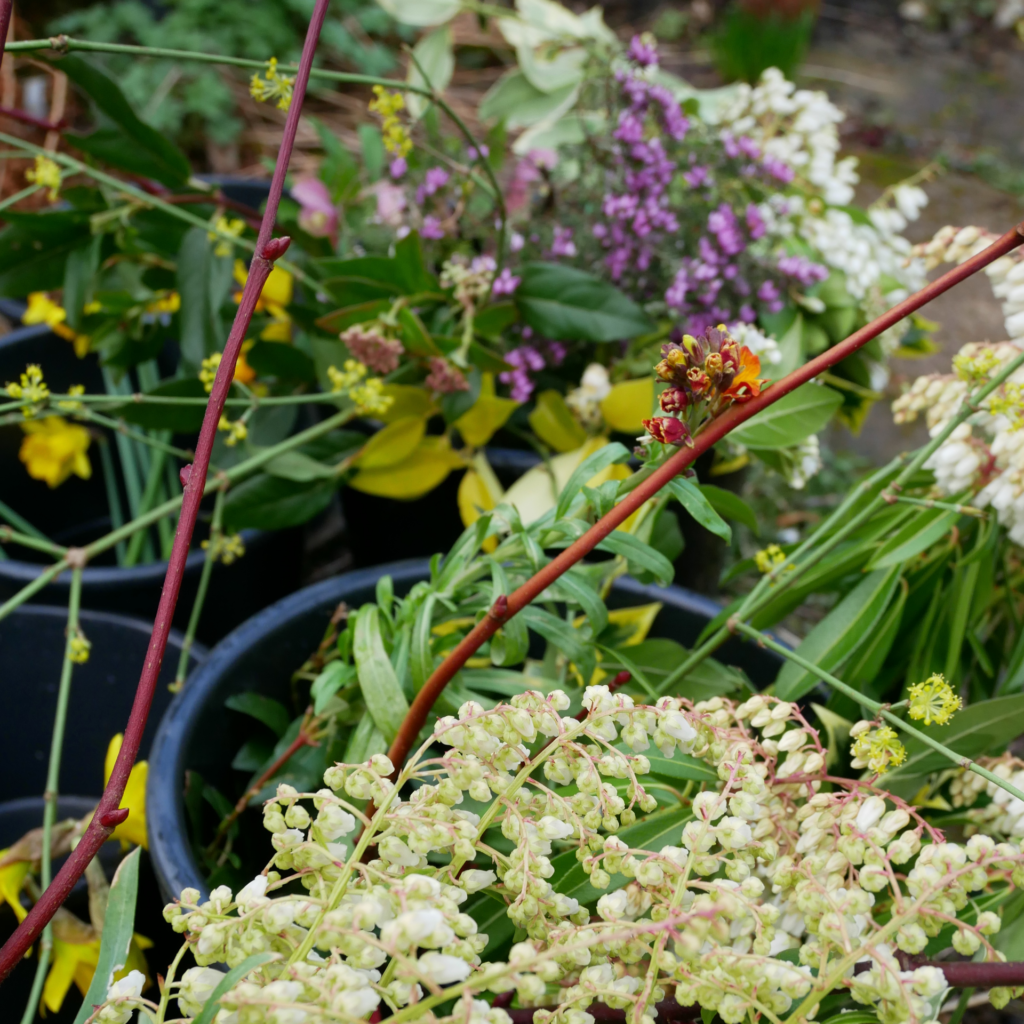


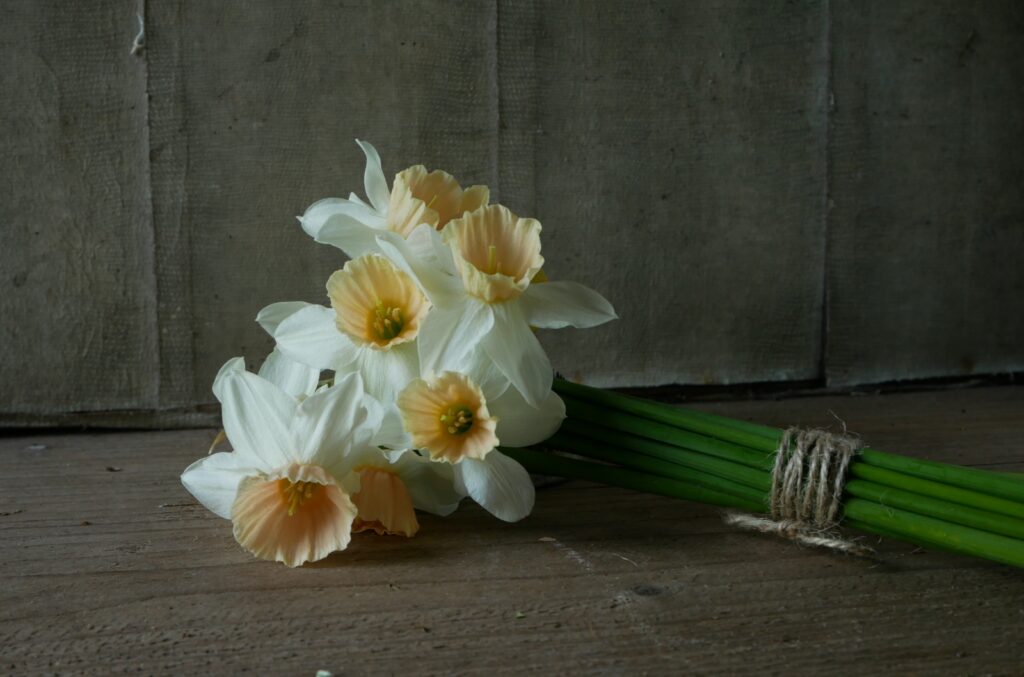
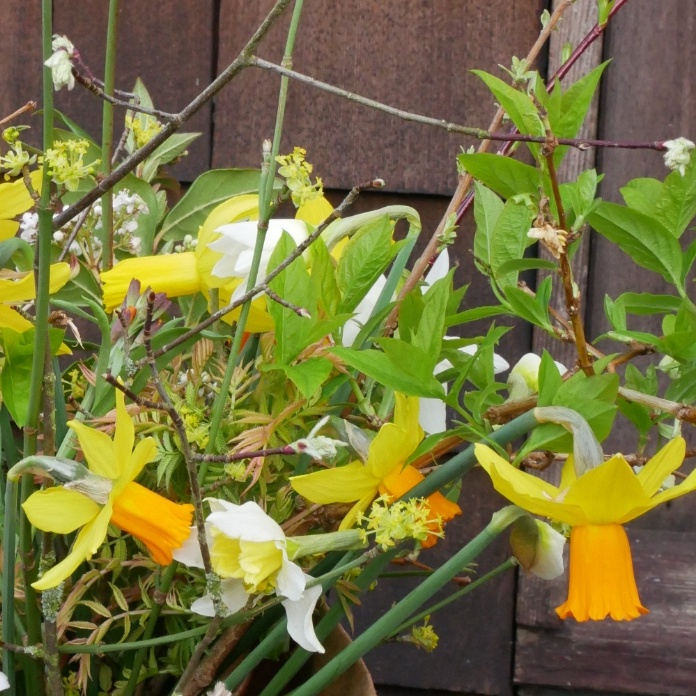
April
By now we are well into the tulip season here in Cumbria. Glorious parrot tulips give welcome colour after the paler early narcissi. They compliment the double late narcissi, those that are reminiscent of a cream egg and can be paired with the new spring foliage that is bursting from its buds in the warmer weather.
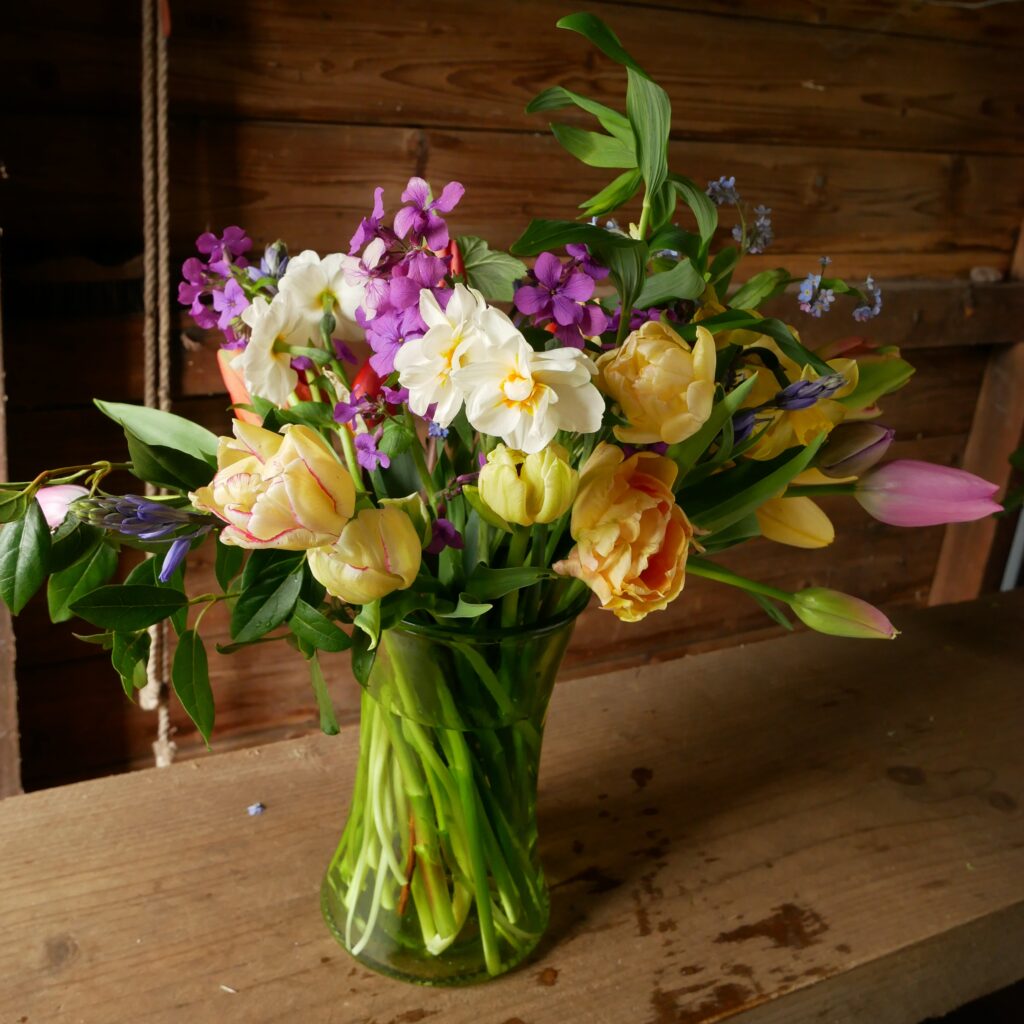
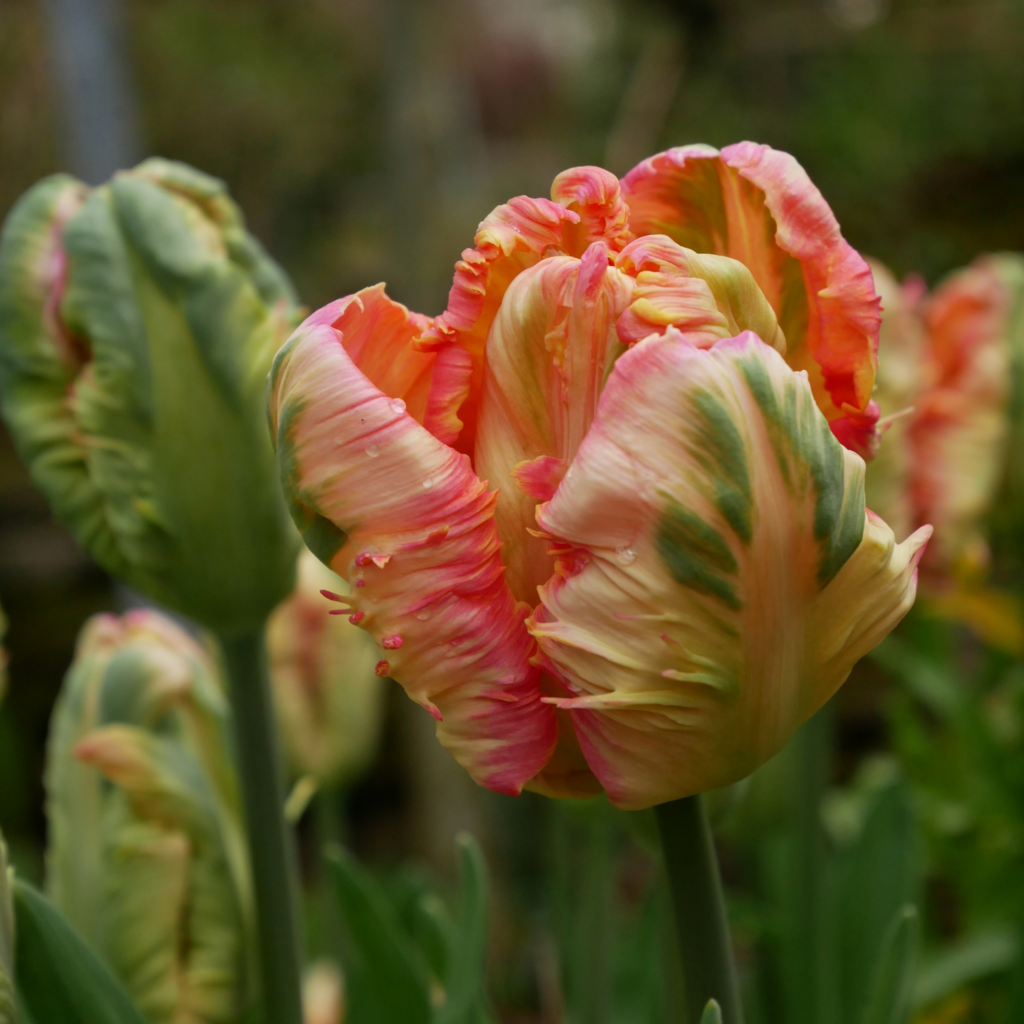
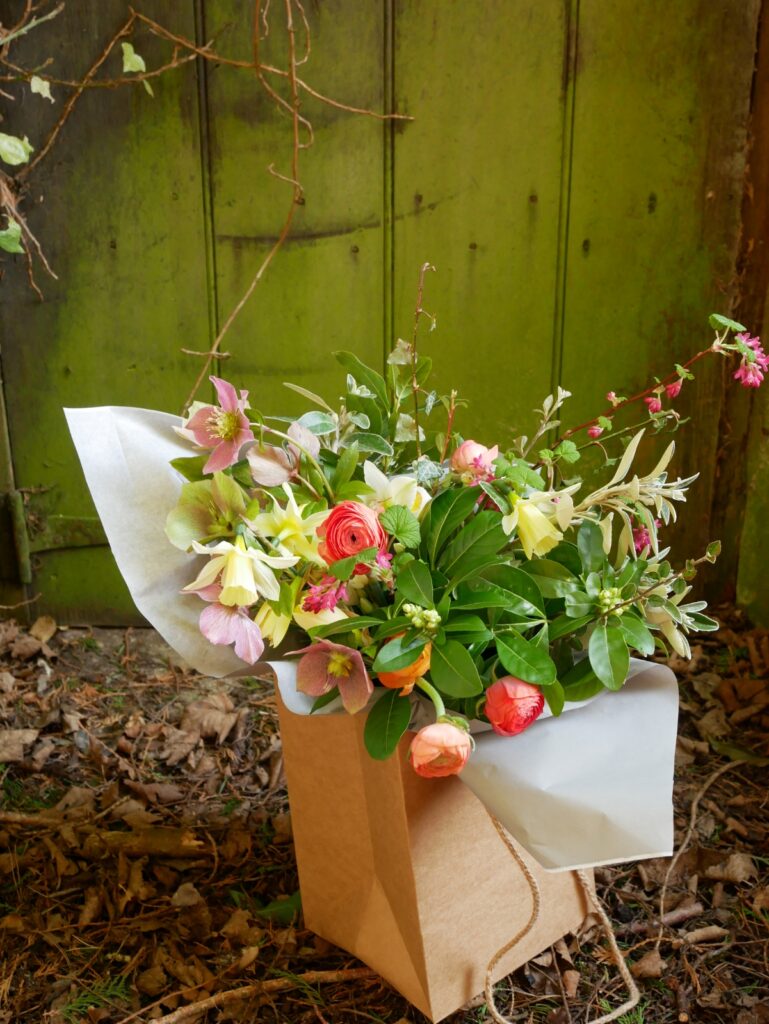
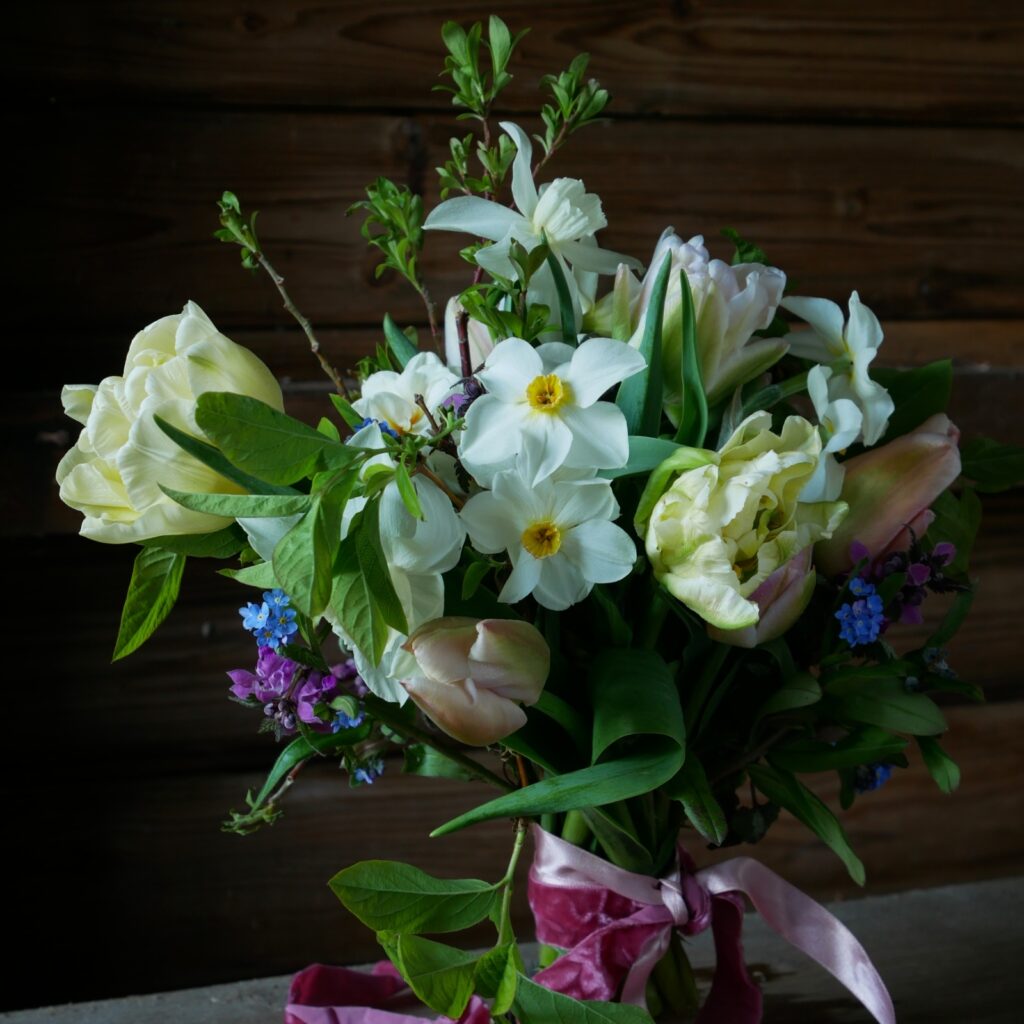
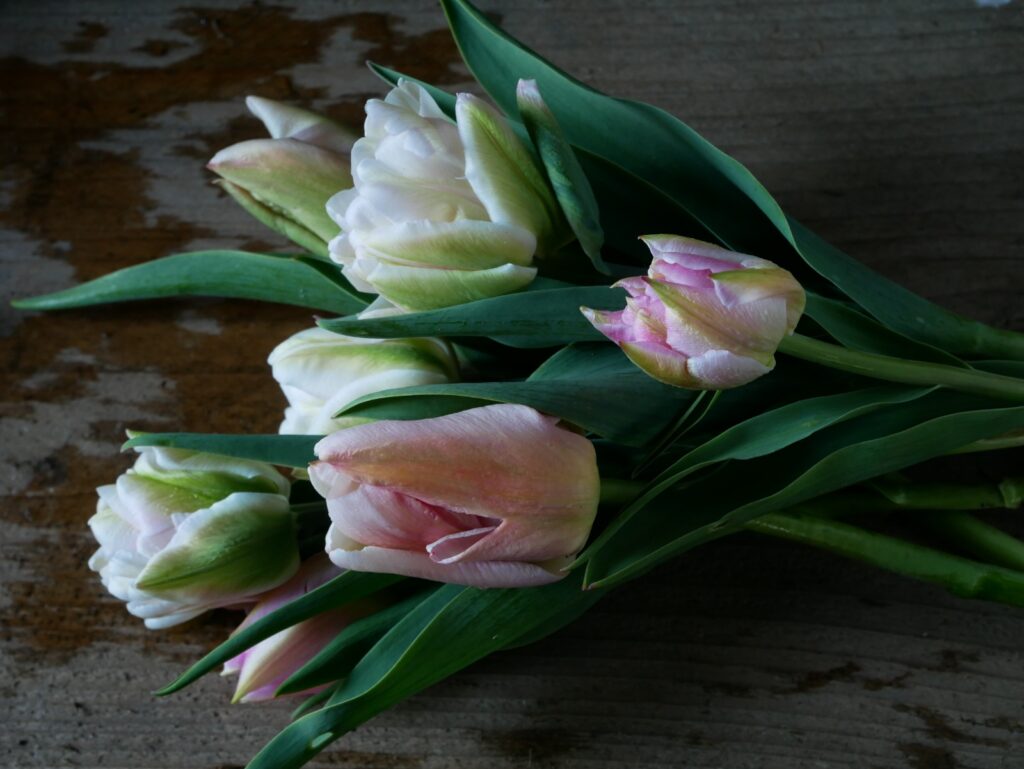
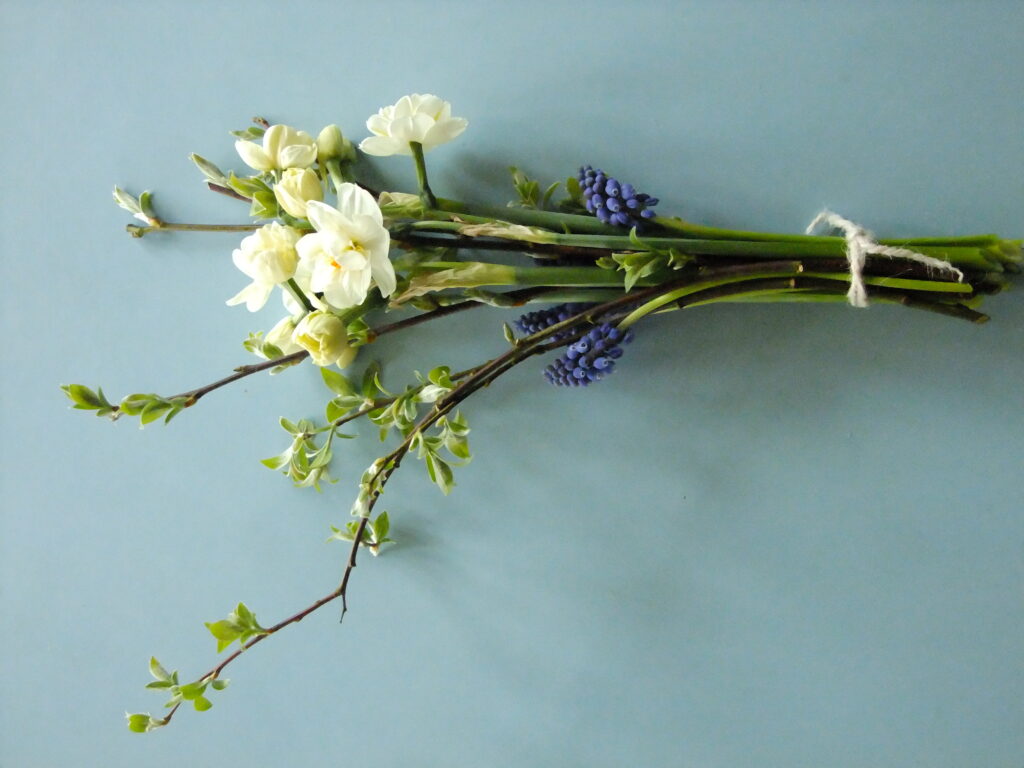
May
The start of May here in Cumbria can be very different to the end of the May….the weather can be so variable, and of course this affects the flowers.
Early May normally sees the last of the tulips, and the very welcome first perennials, while later May can sometimes see the start of annuals, as well.
Flowers may include; Hesperis, tulips, lily of the valley, bluebells, narcissi, perennial cornflower, bistort, aquilegia, geum, grasses.
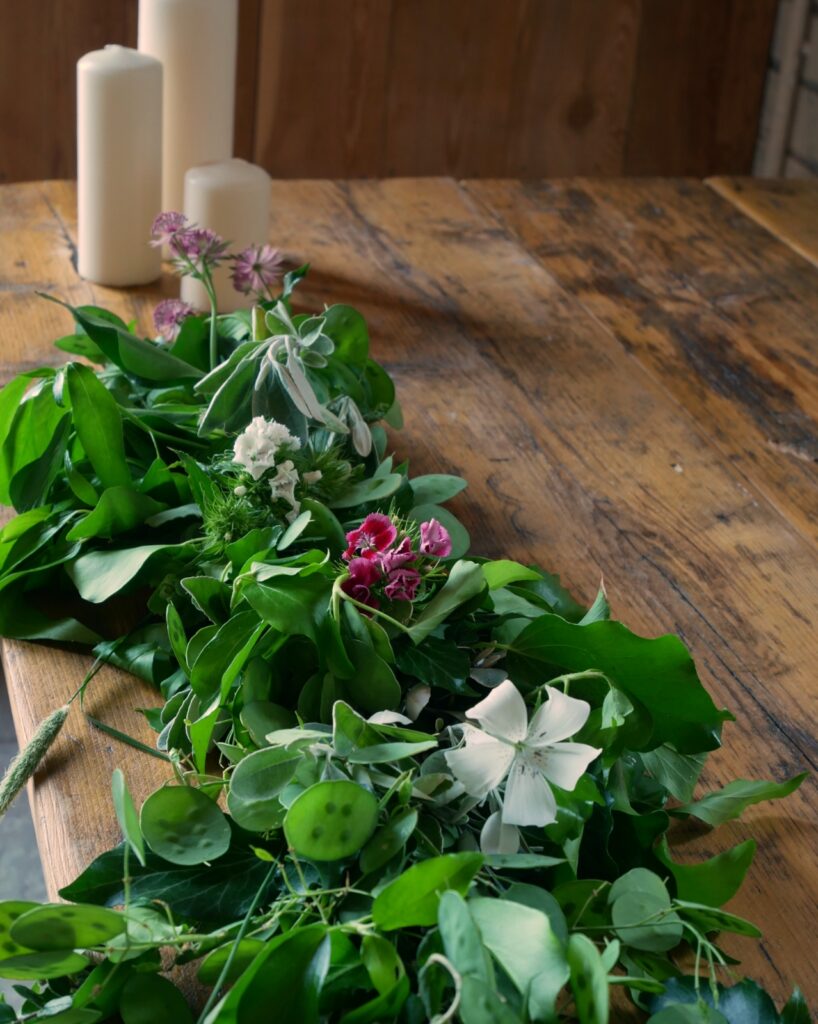
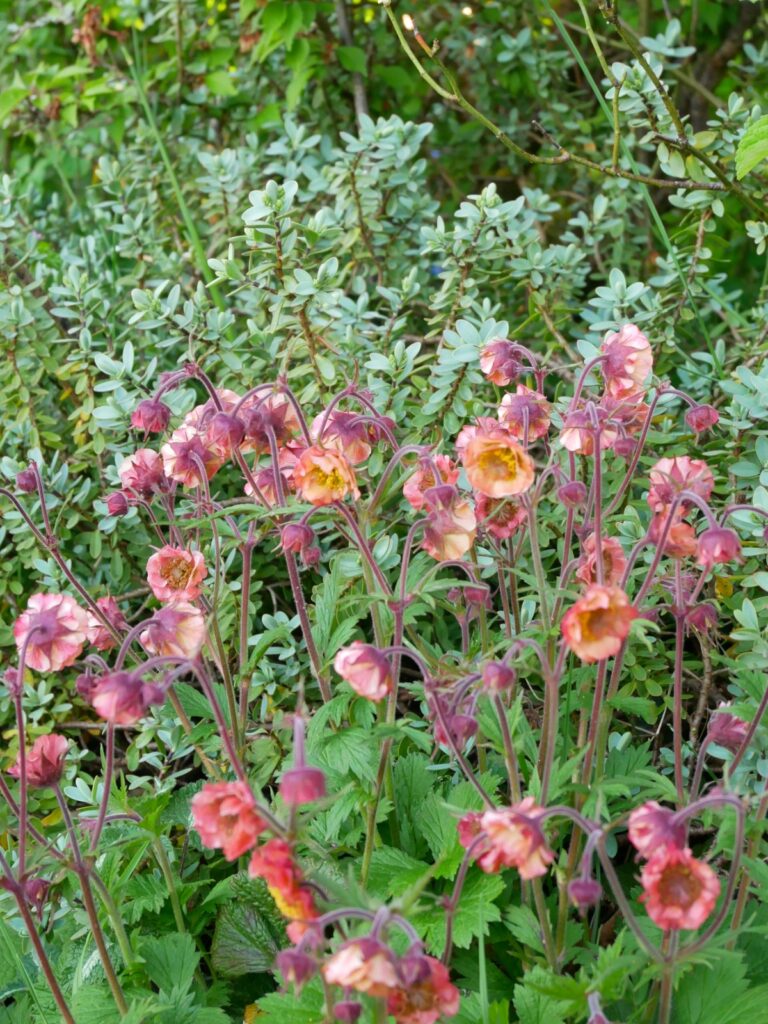
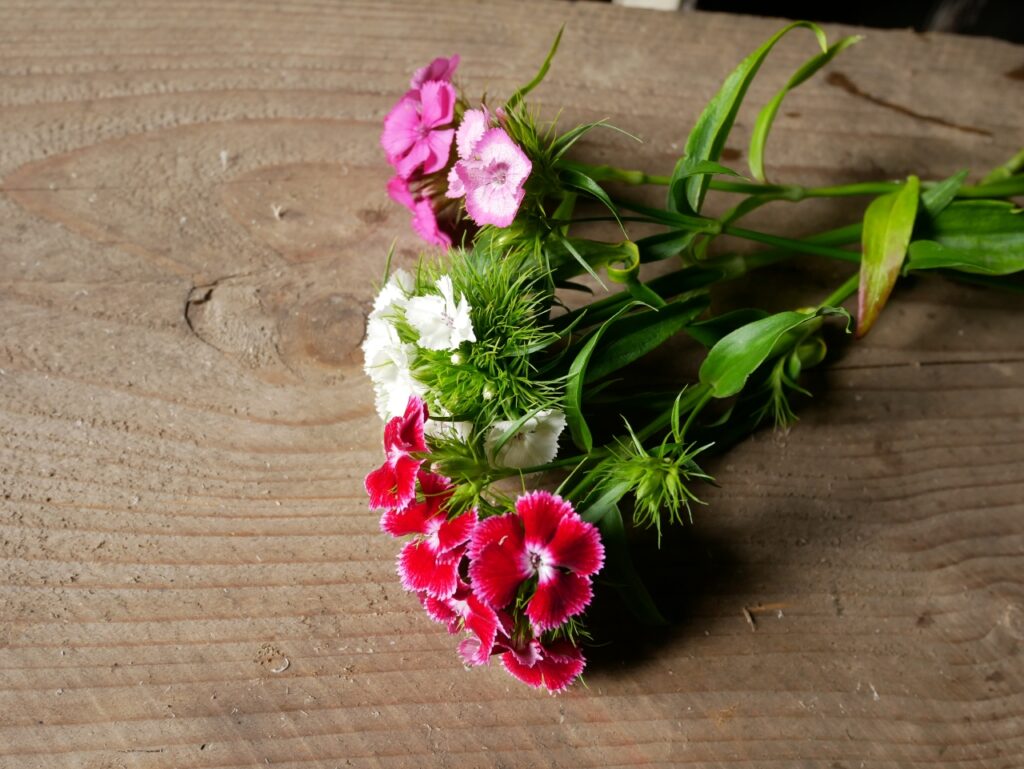
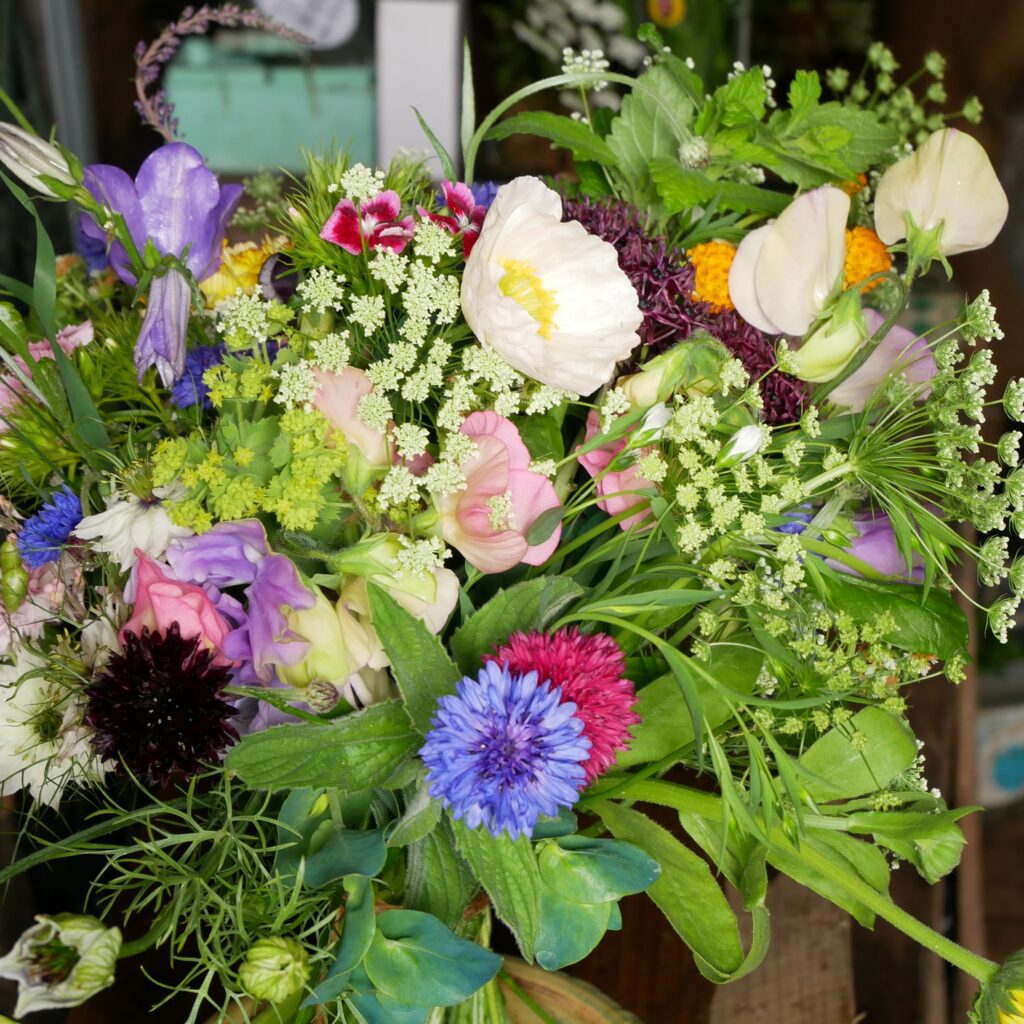







June
By June, there is lots happening in the flower patch. Overwintered annuals are flowering, as are spring sown annuals. This might include Cynoglossum, mint, snapdragons (antirrhinums), scabious, clary sage, (Salvia Horminium), astrantia, calendula, grasses, annual phlox, annual cornflowers, yarrow (achillea), sedum, sweet peas, feverfew, roses, astilbe, lady’s mantel, cow parsley, ammi, corncockle, alliums.
Biennials such as Hesperis, and Sweet William are all starting to flower too.
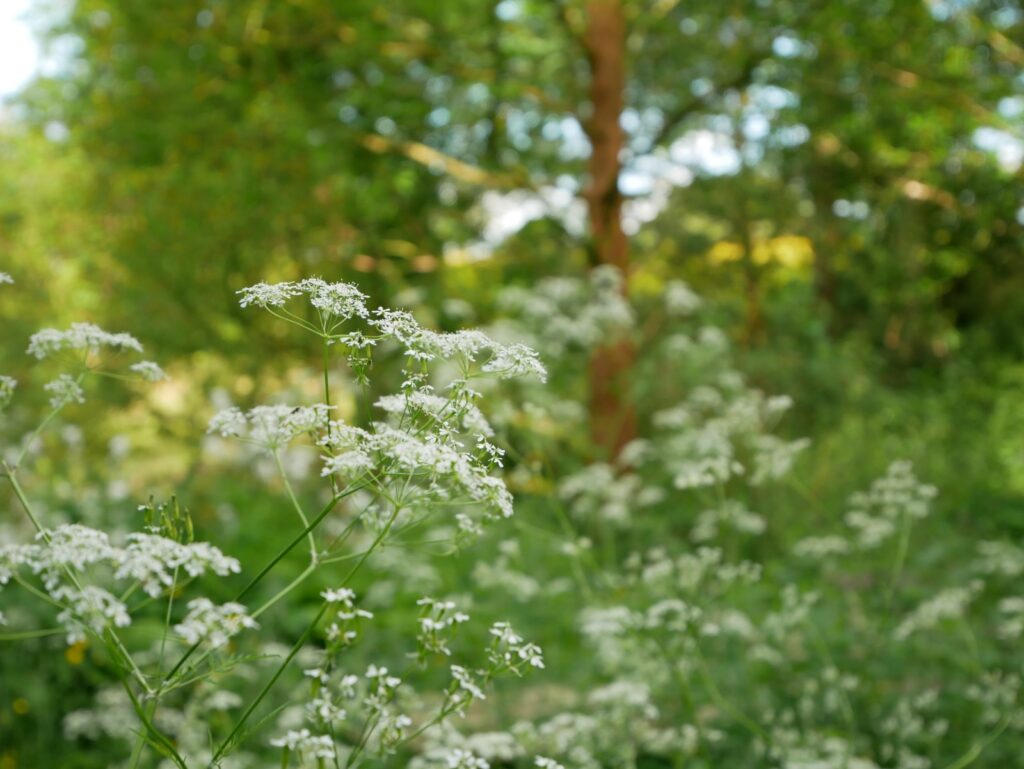
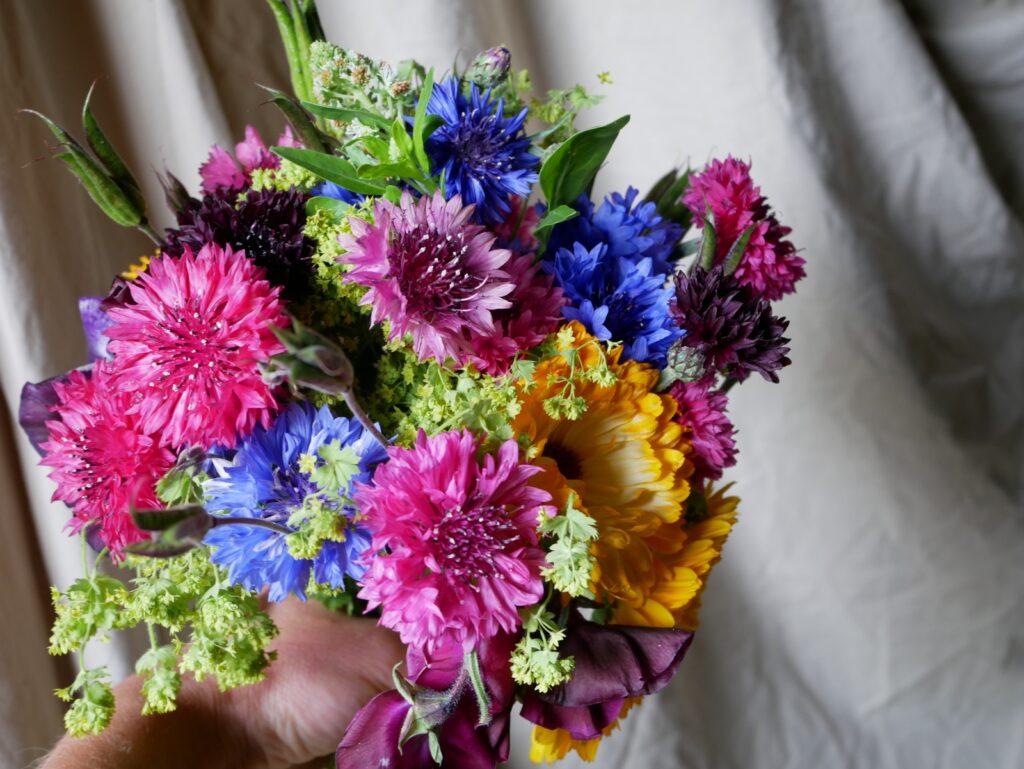
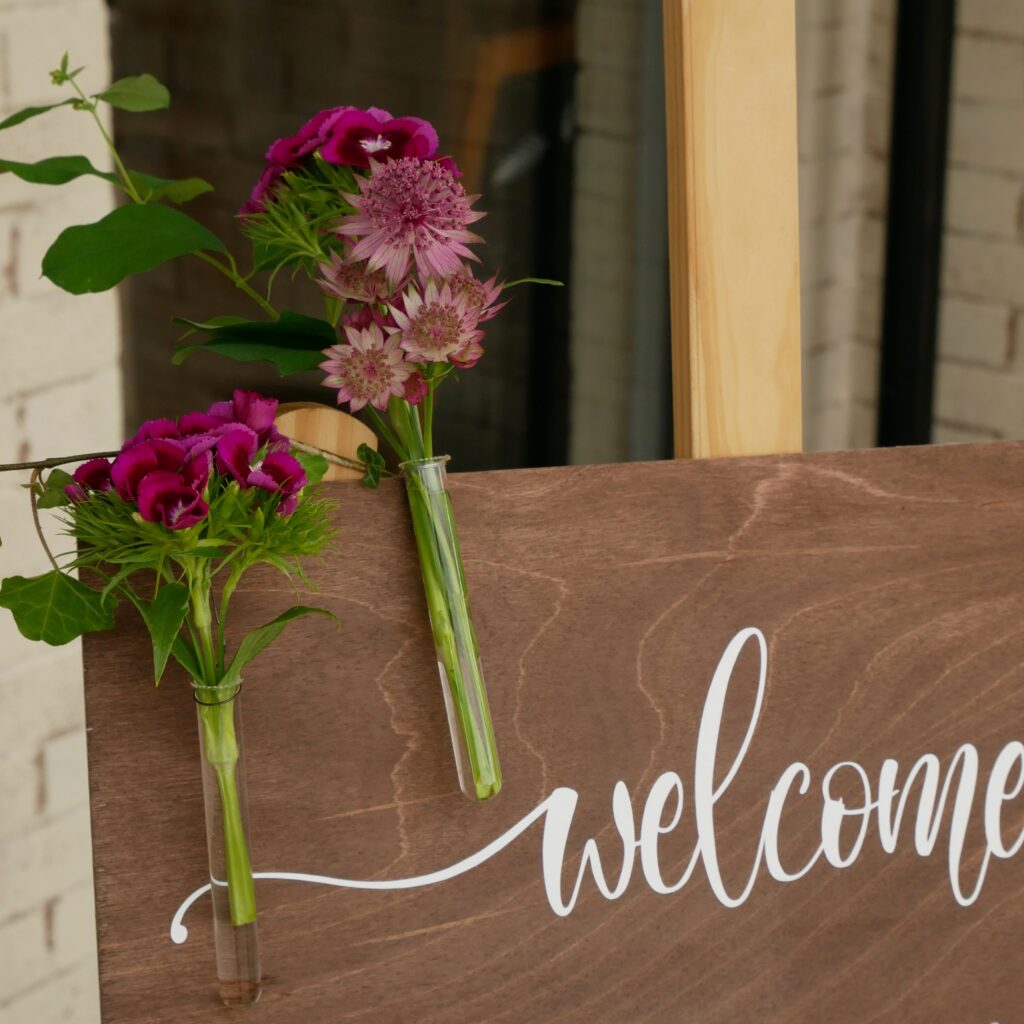
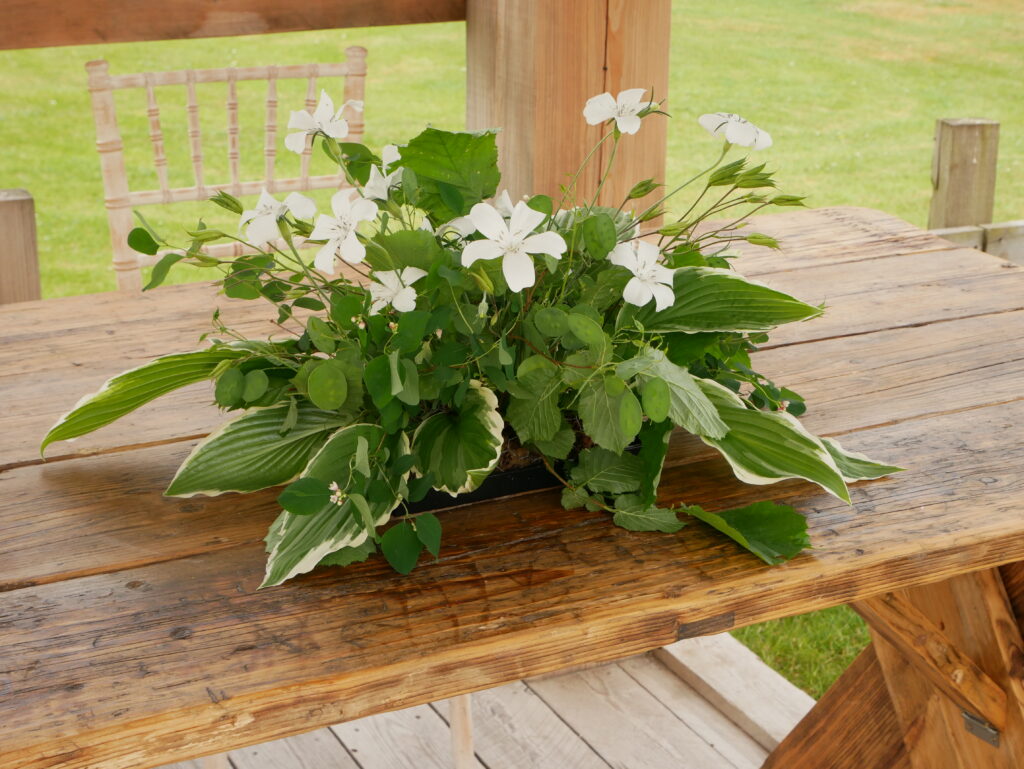
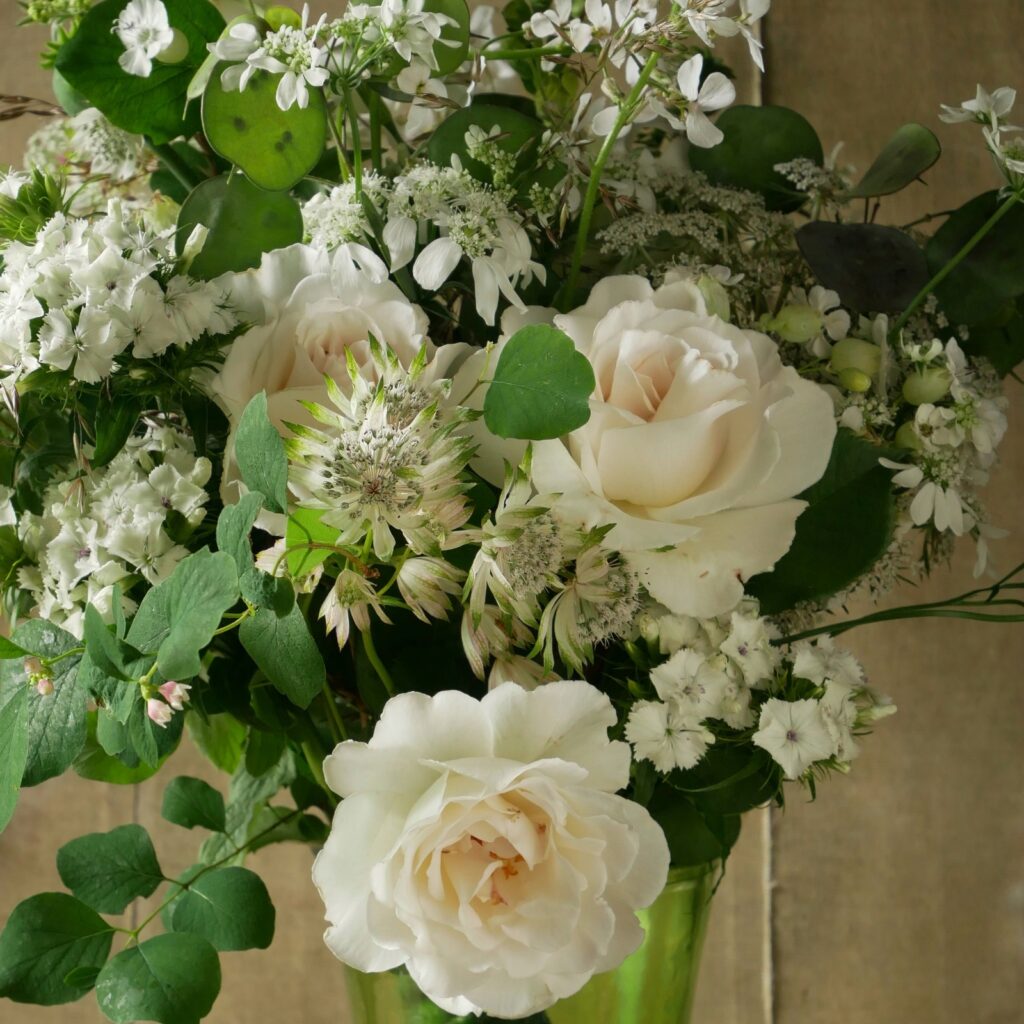
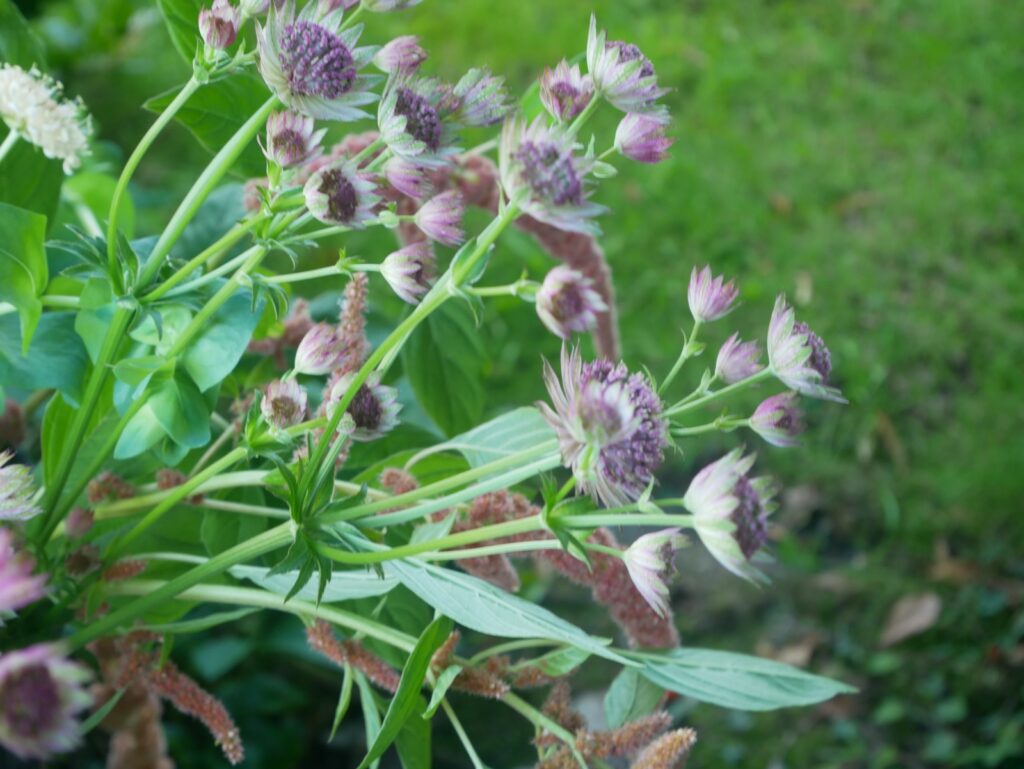
July
July is proper summer, flowers galore, lots of shapes, textures and colours to choose from, as well as seed pods, foliage and berries. A good month for a wedding! The tail end of July here in Cumbria sees those first few outside dahlias flowering too, always a welcome sight.
Here are some photos to give you a feel for July flowers, including Cynoglossum, mint, blue thistle (eryngium), snapdragons (antirrhinums), scabious, clary sage, (Salvia Horminium), astrantia, calendula, rudbeckia, grasses, amaranthus, annual cornflowers, poppies, yarrow (achillea), sedum, sweet peas, feverfew, hypericum berries, roses, sweet william, astilbe, dahlias, poppies.
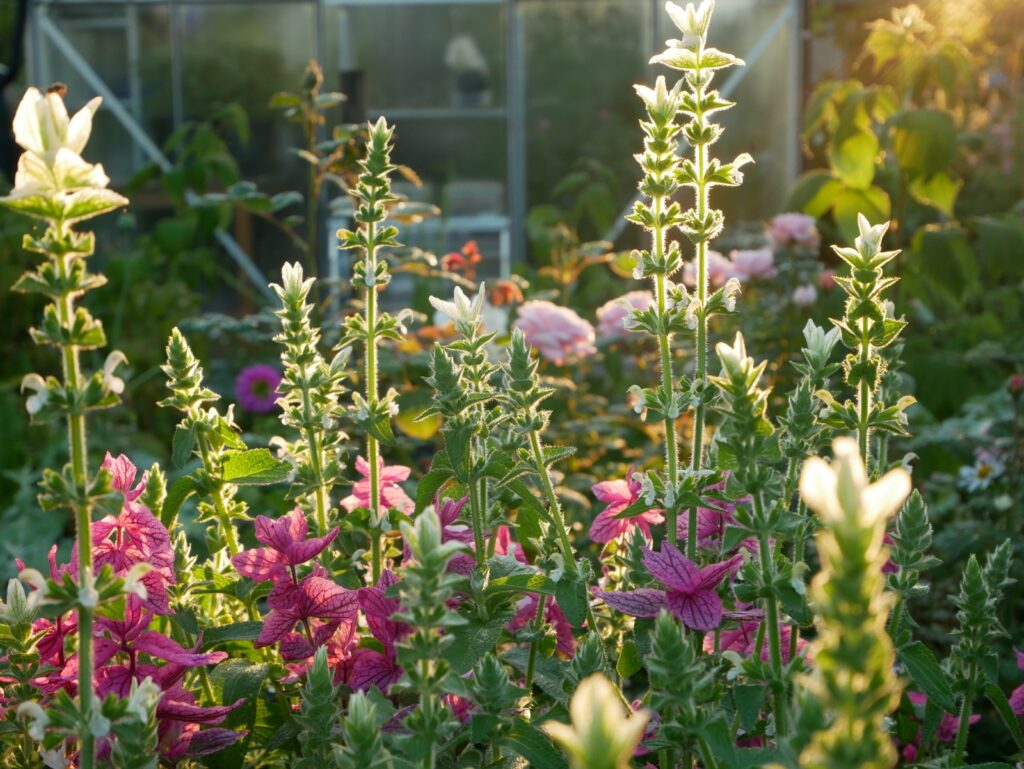
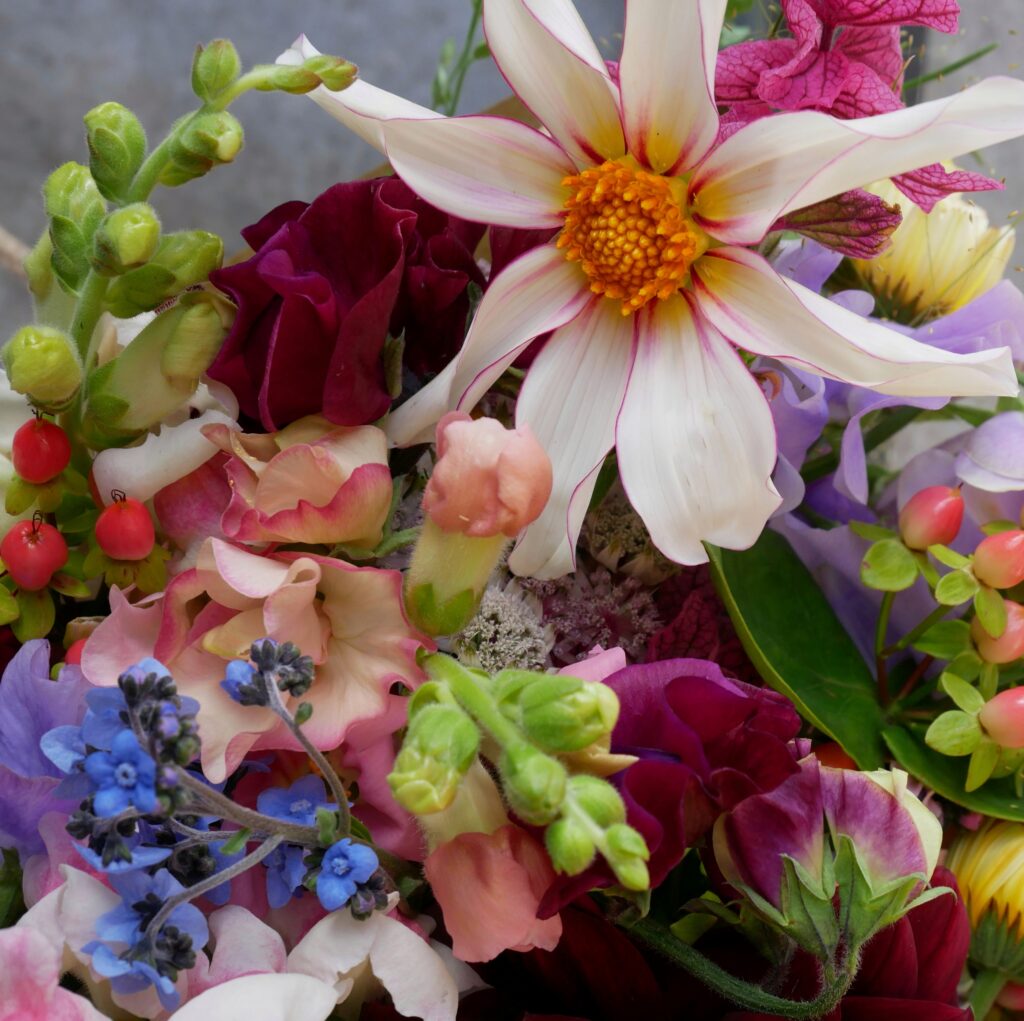
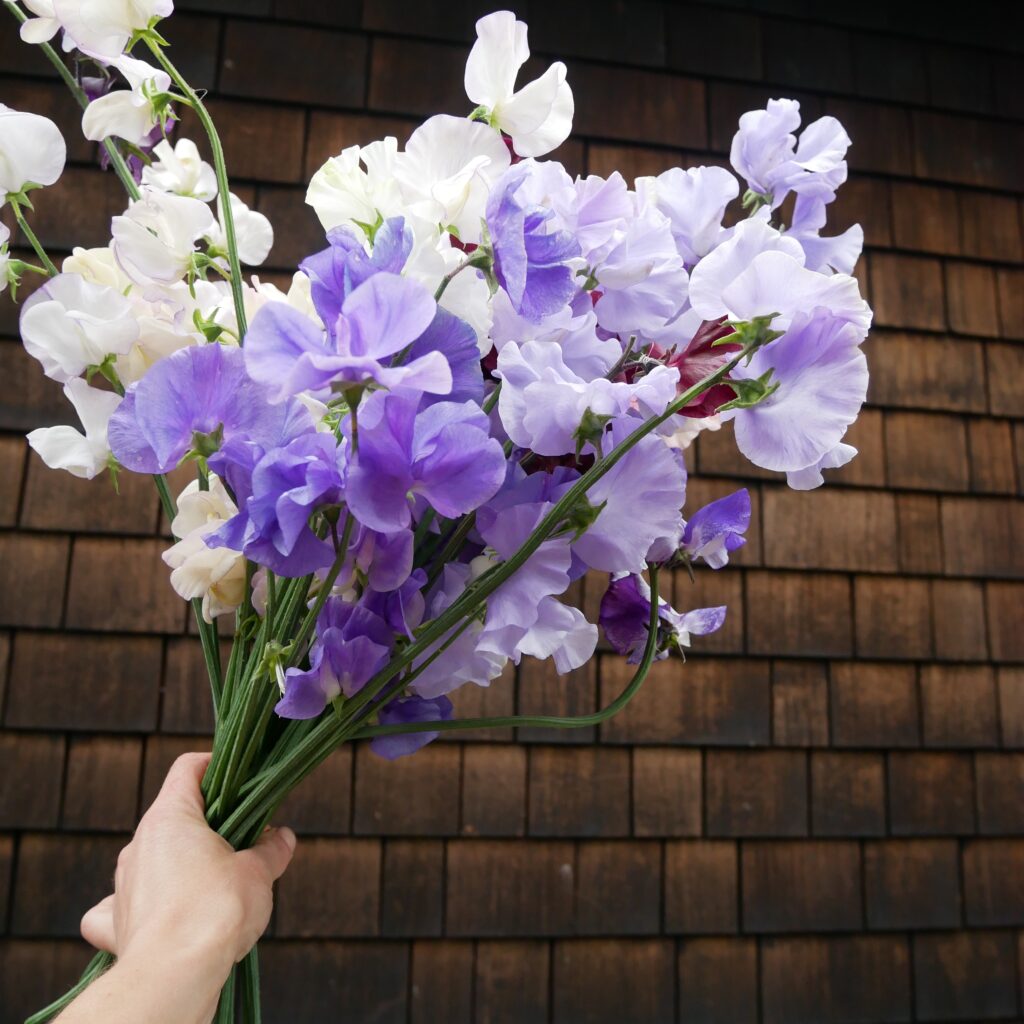
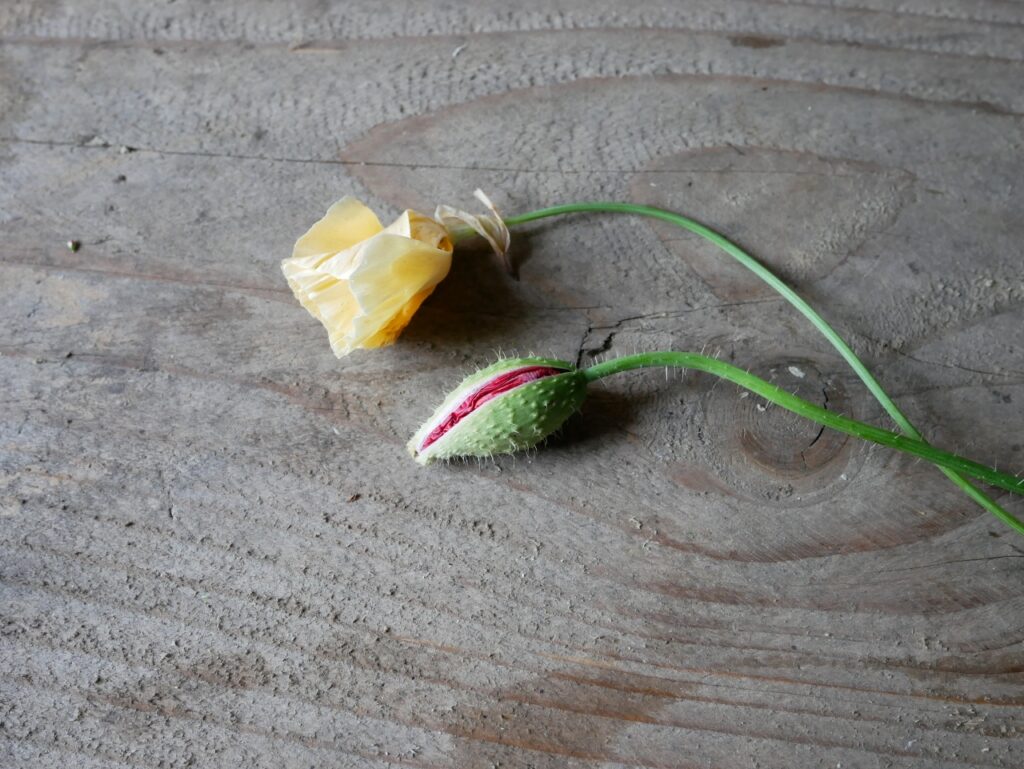
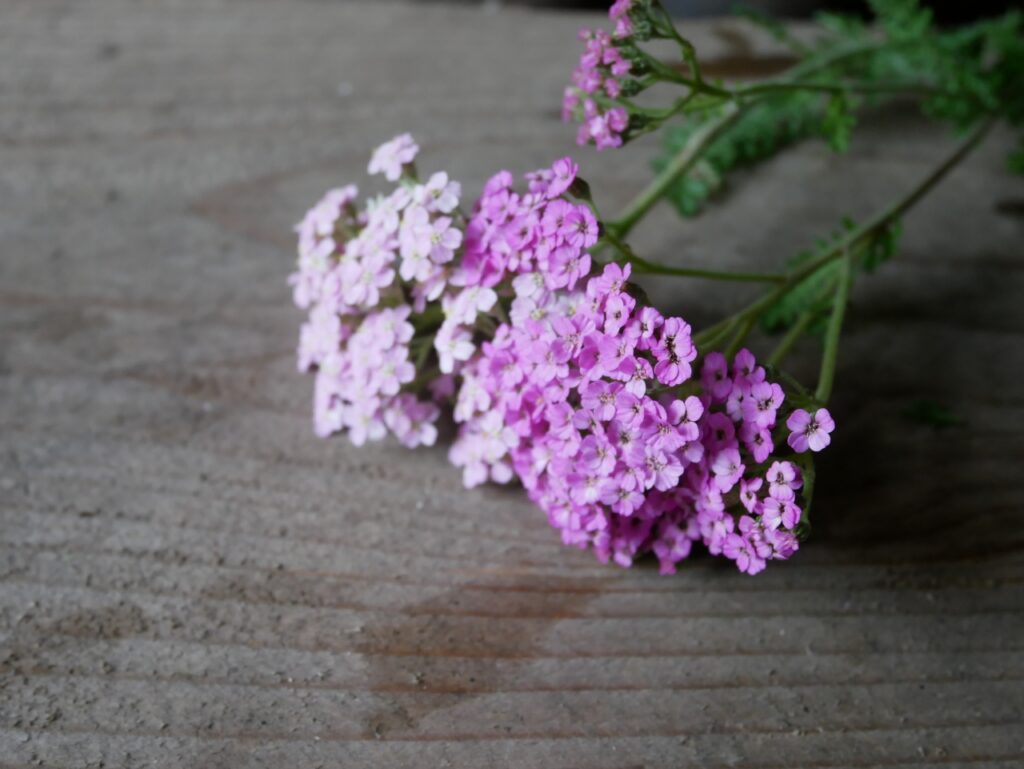
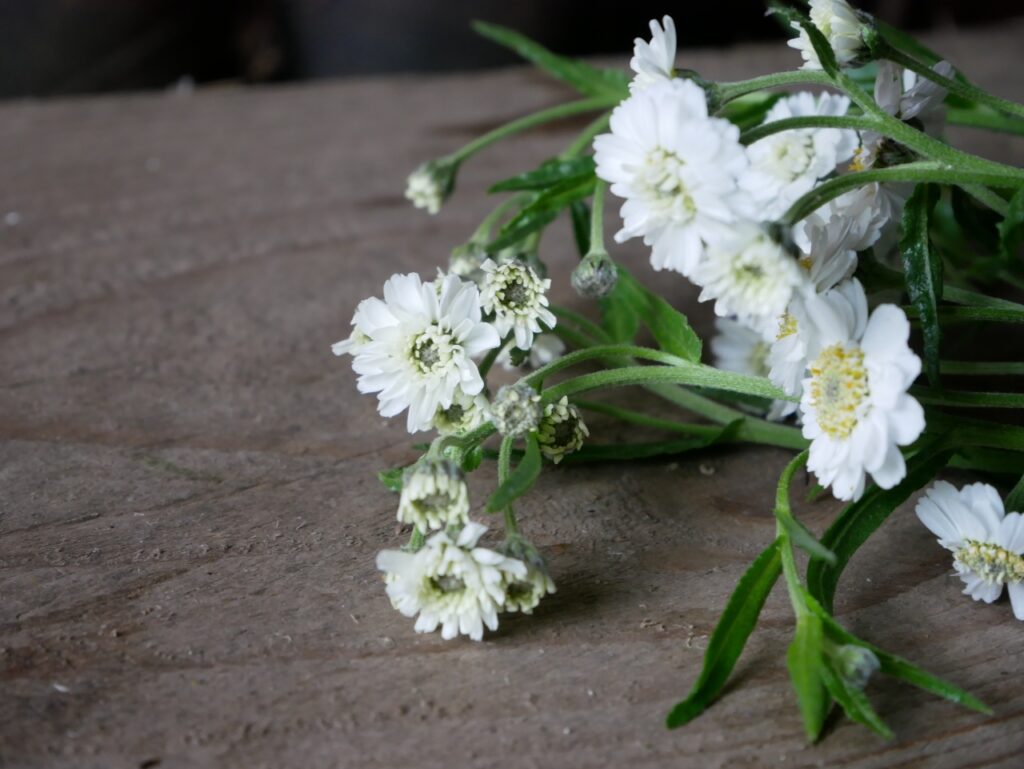
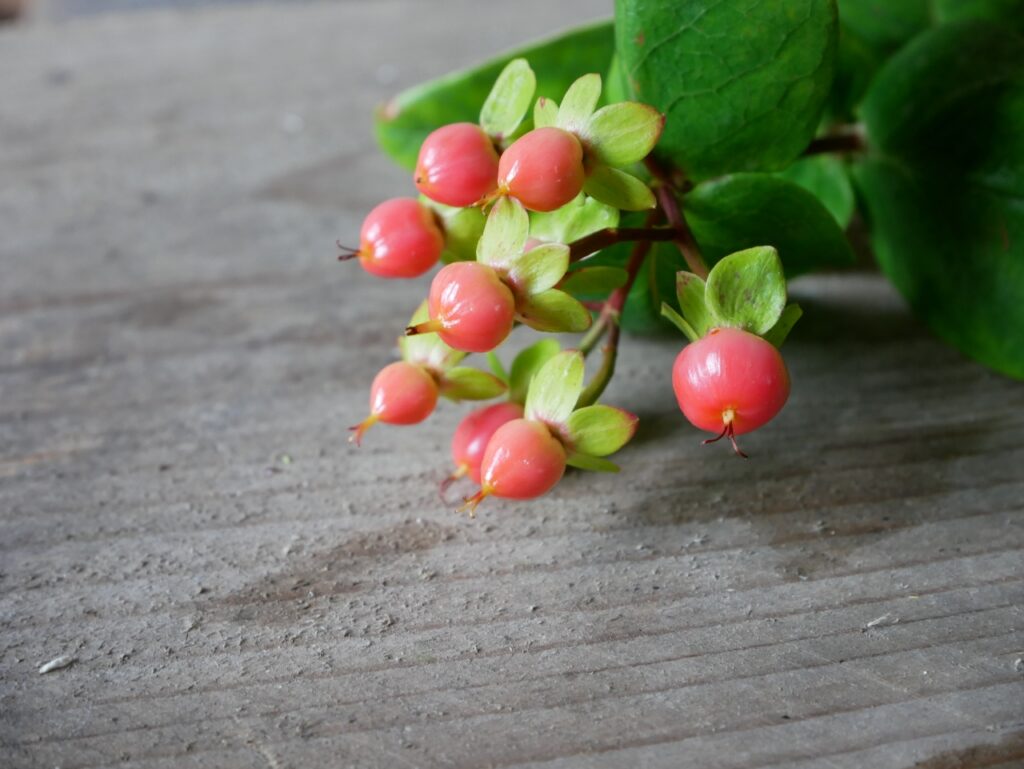
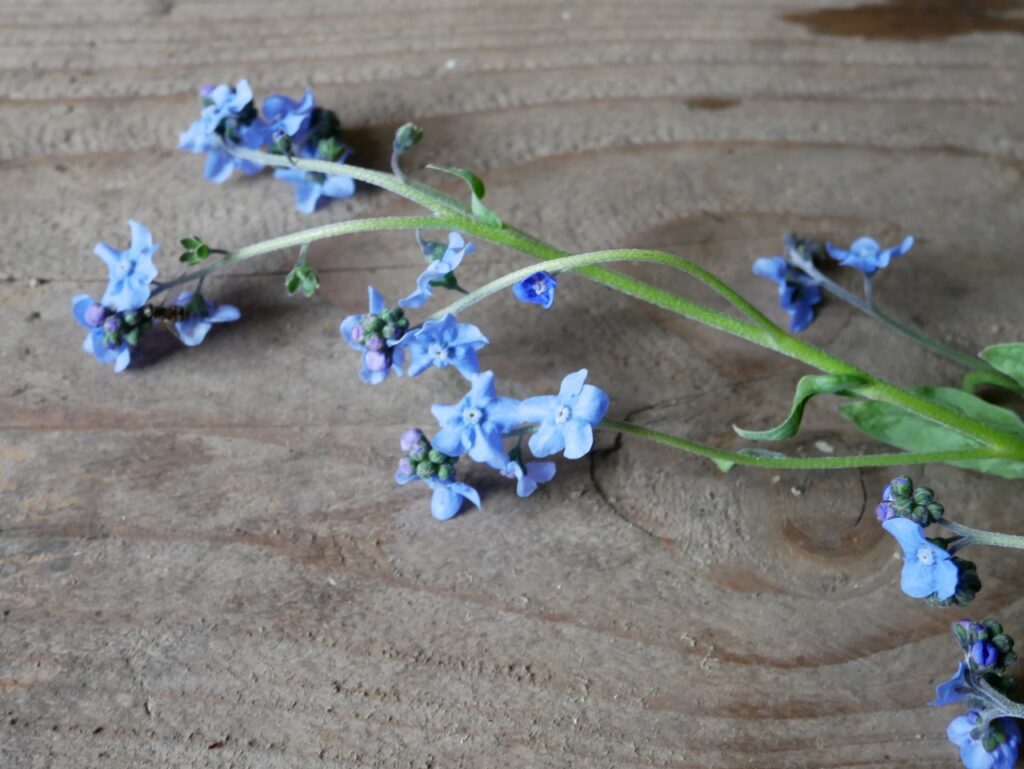
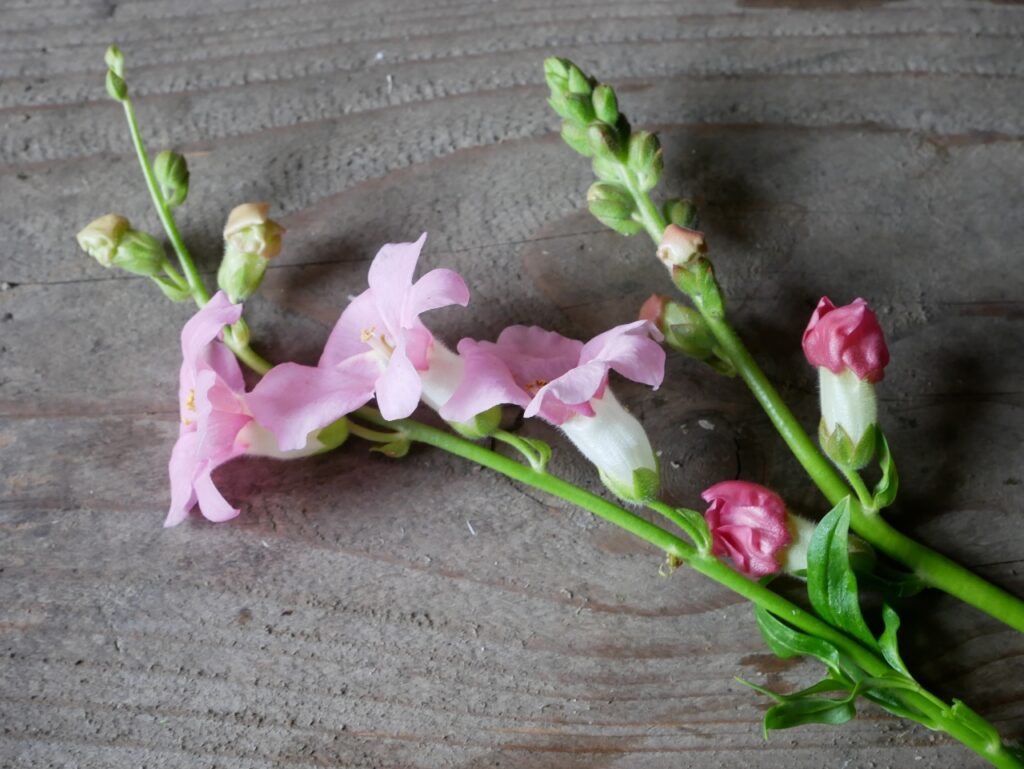
August
In August we have dahlias, and lots of other flowers, seed pods, grasses, foliage and some berries. Another good month for a wedding! Flowers during August may include:
Dahlias, mint, blue thistle (eryngium), snapdragons (antirrhinums), scabious, clary sage, (Salvia Horminium), astrantia, calendula, rudbeckia, grasses, amaranthus, annual cornflowers, poppies, yarrow (achillea), sedum, sweet peas, feverfew, hypericum berries, gypsophila, larkspur, delphiniums, roses. Here are a few photos to give you a feel for August flowers….
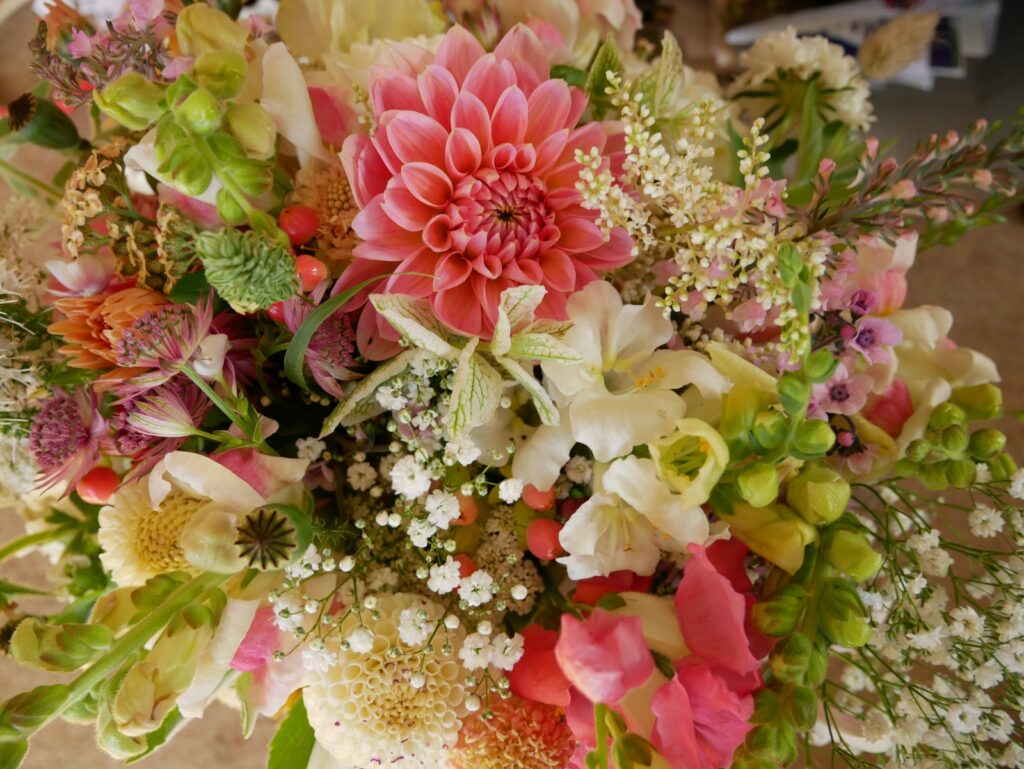
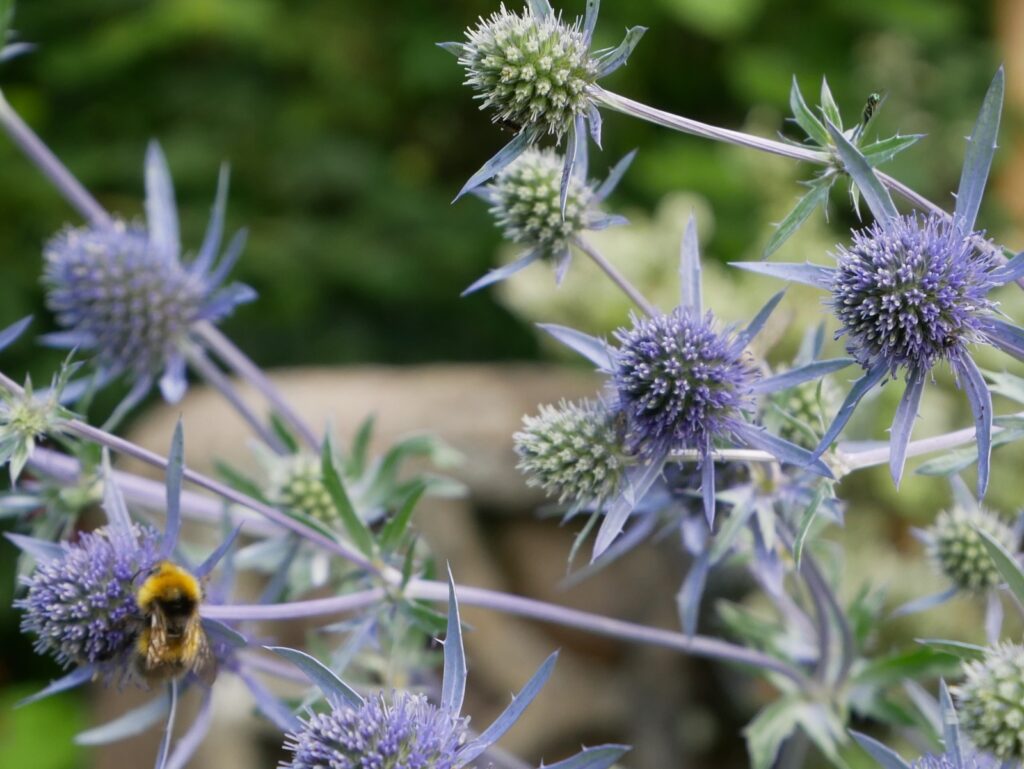
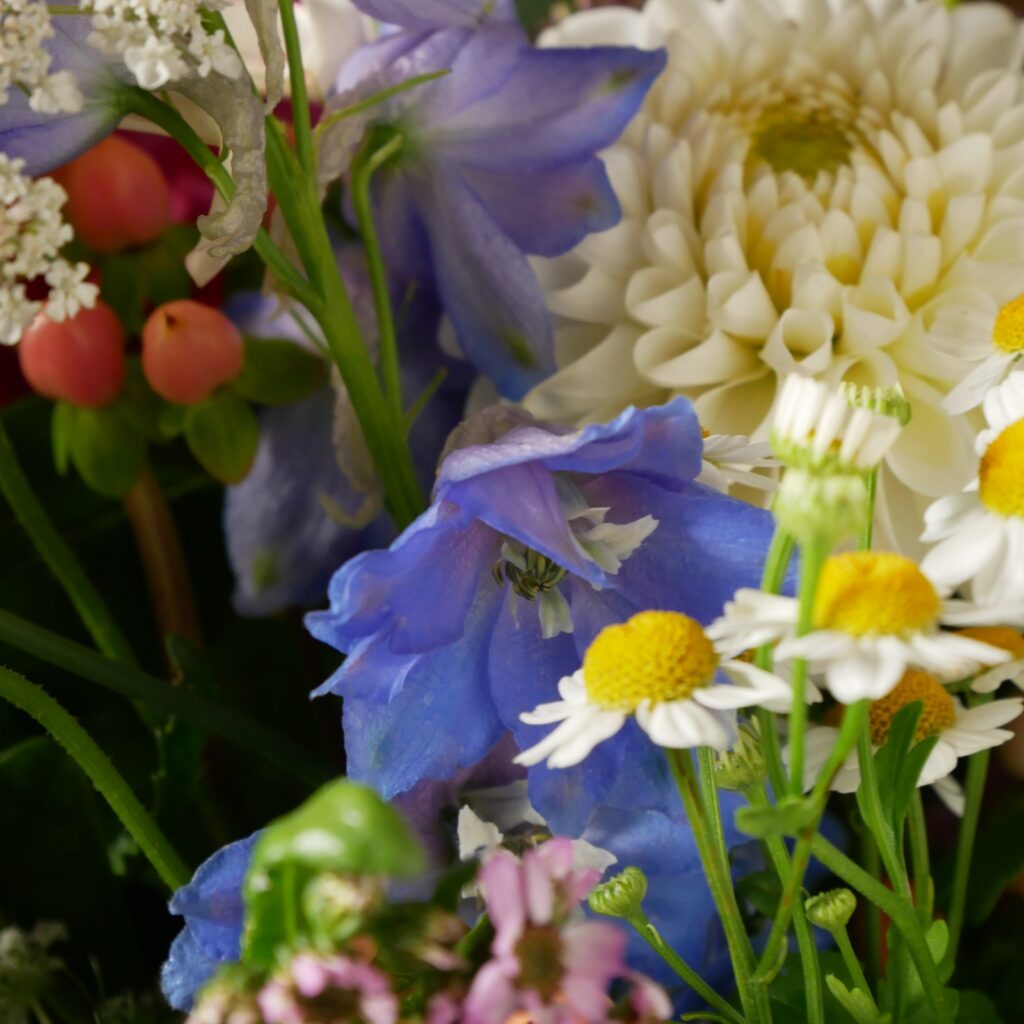
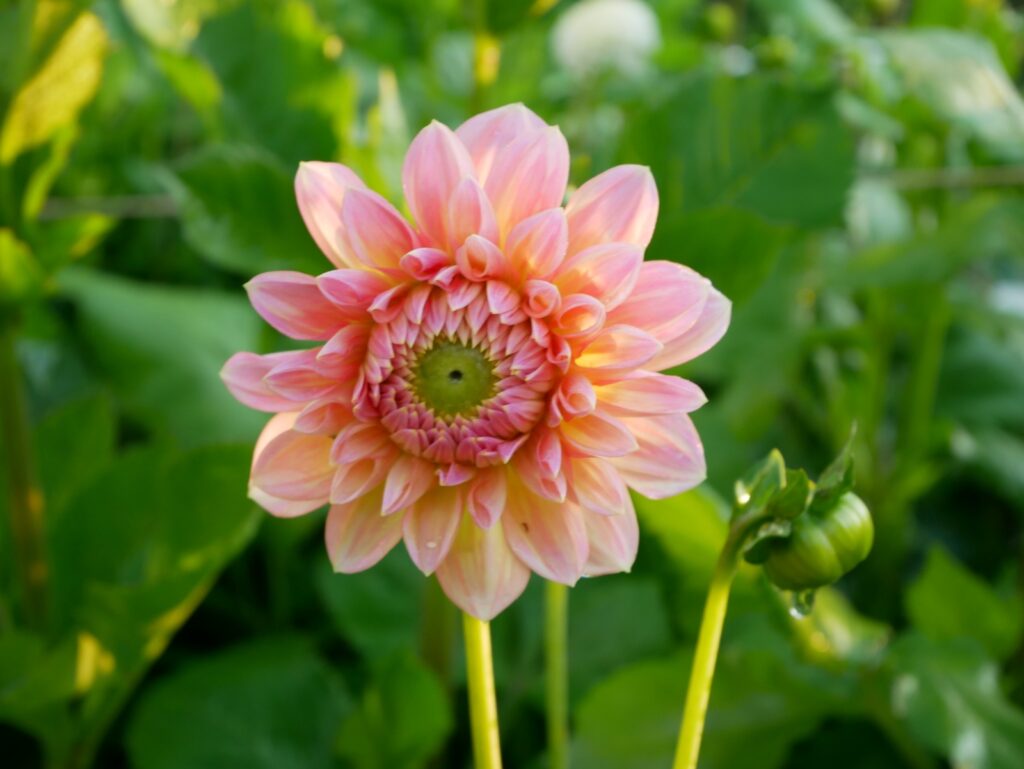
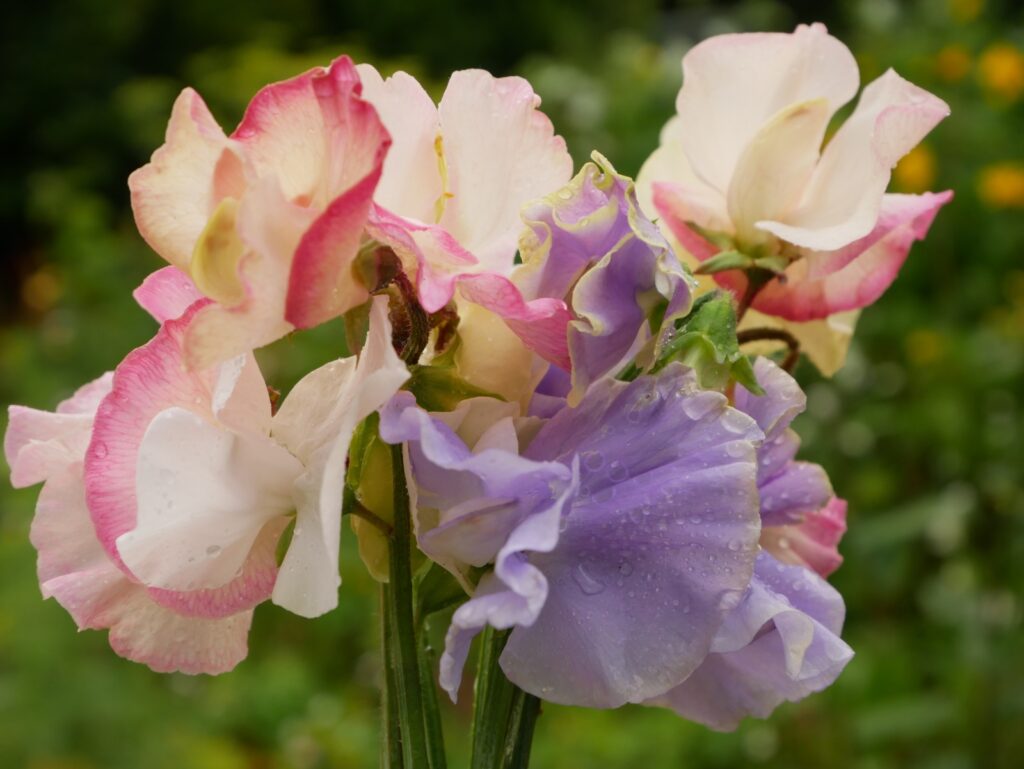
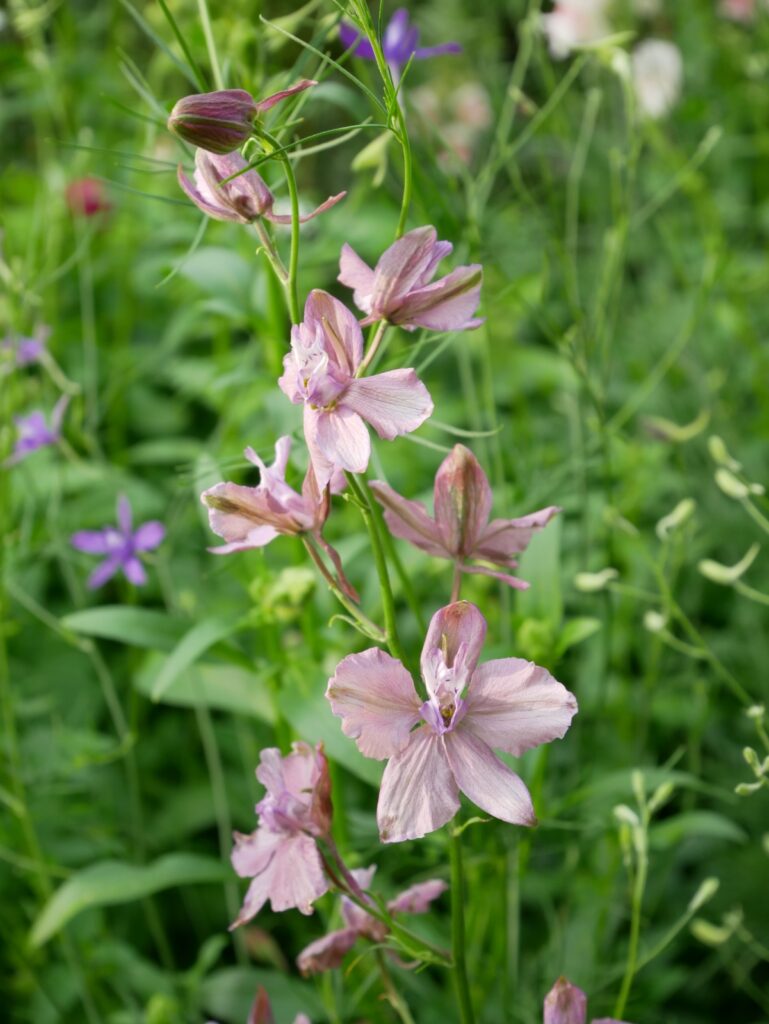
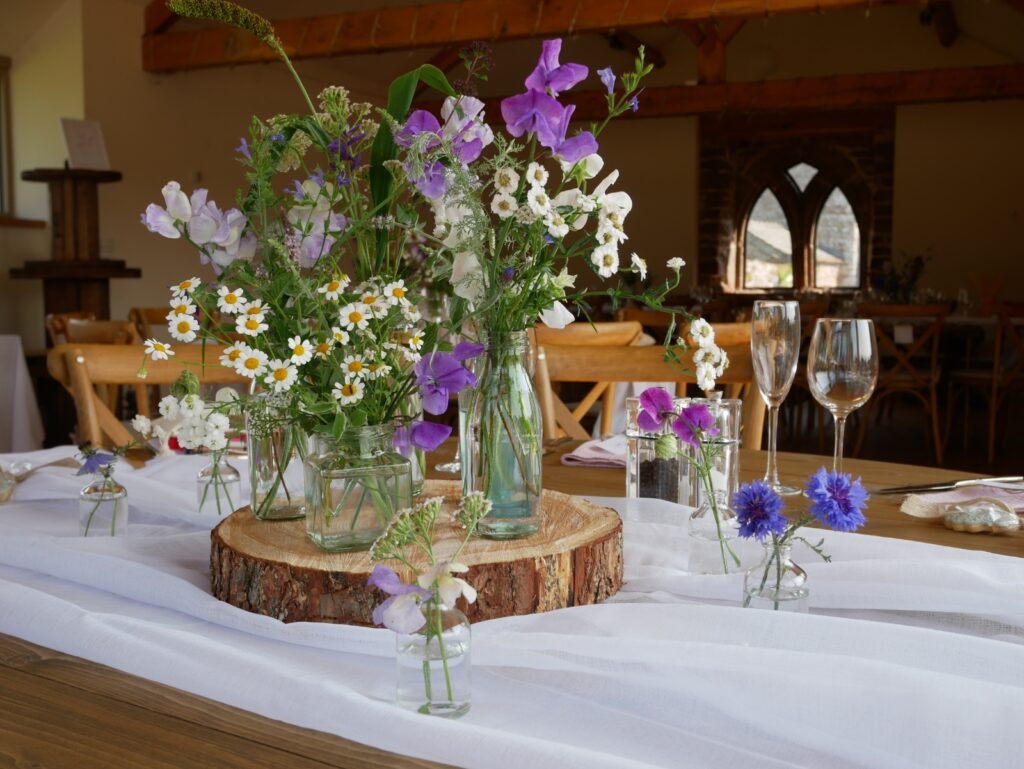
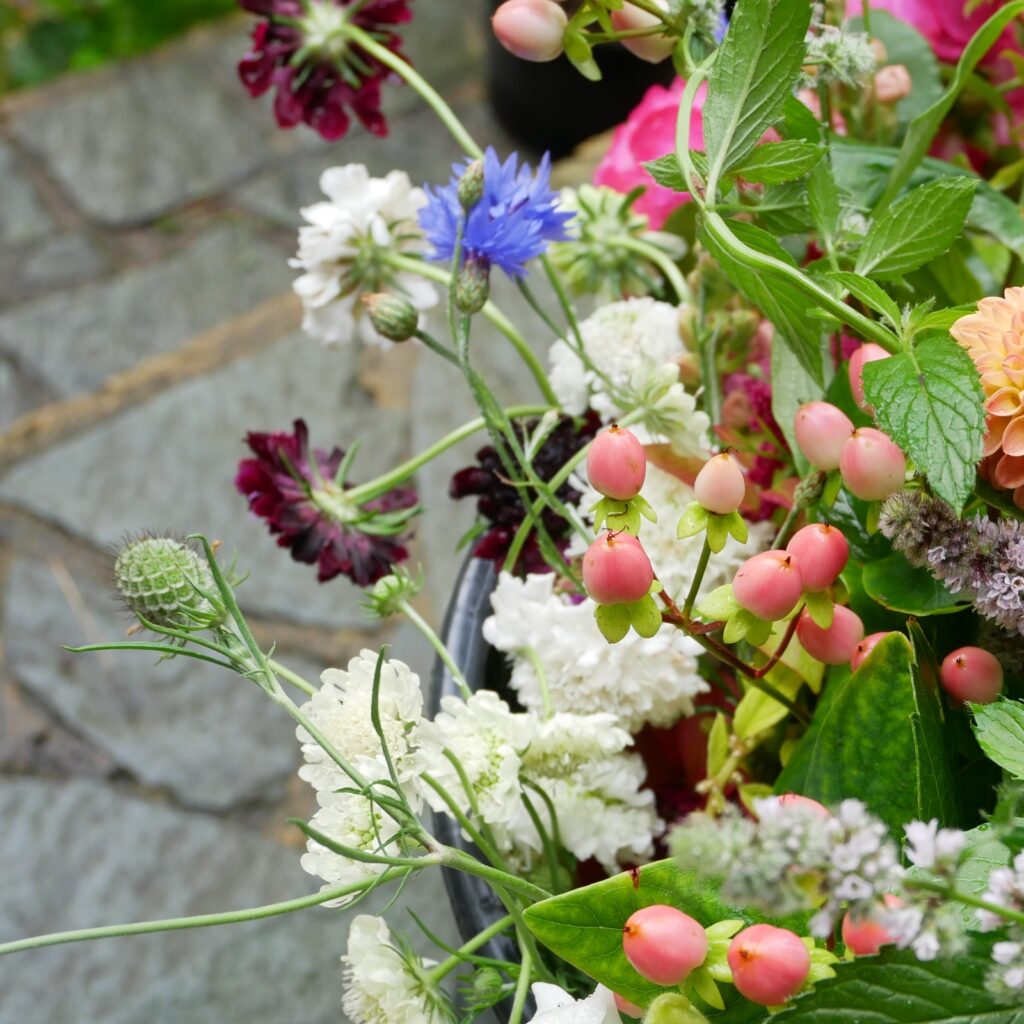
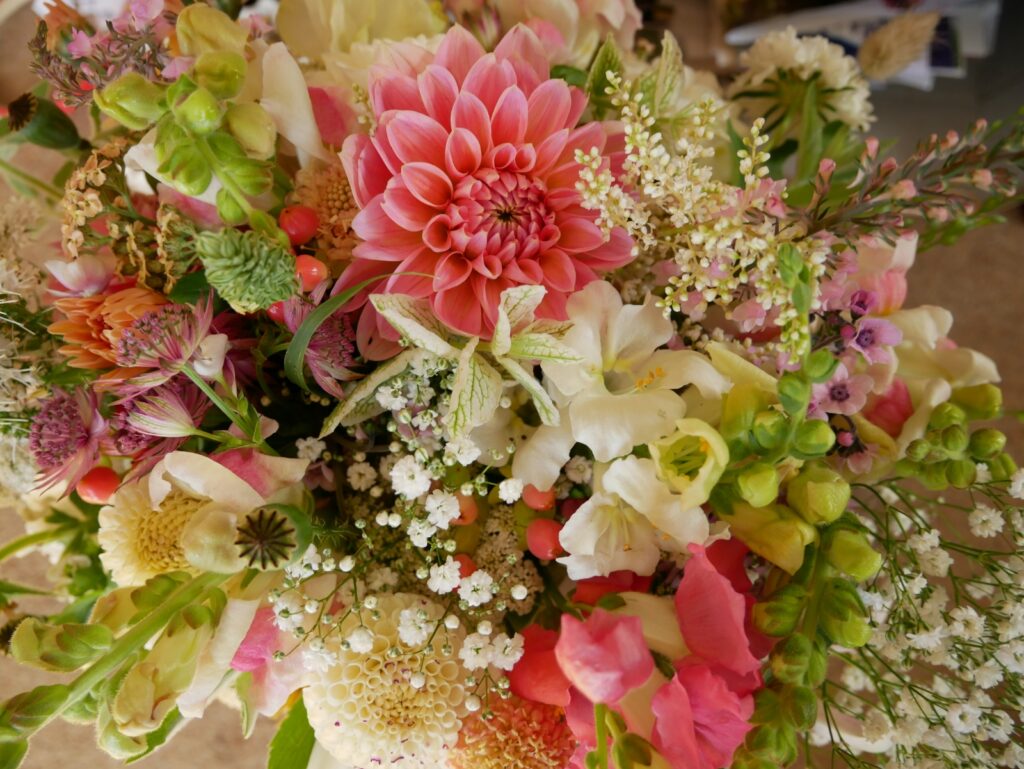
September
So you might think that by October, as we’re into autumn, that flowers might be a bit scarce…..well, they’re definitely precious in October! The weather as always makes a huge difference as to the flowers. If we have no or light frosts, we can have the most amazing chrysanthemums…..see below! I’m always amazed by how many other flowers keep on going too.
Providing the frosts hold off (or at least are held at bay by fleece tunnels and greenhouses) September has the potential to be a glorious month for flowers. Here is a glimpse into a September of flowers….
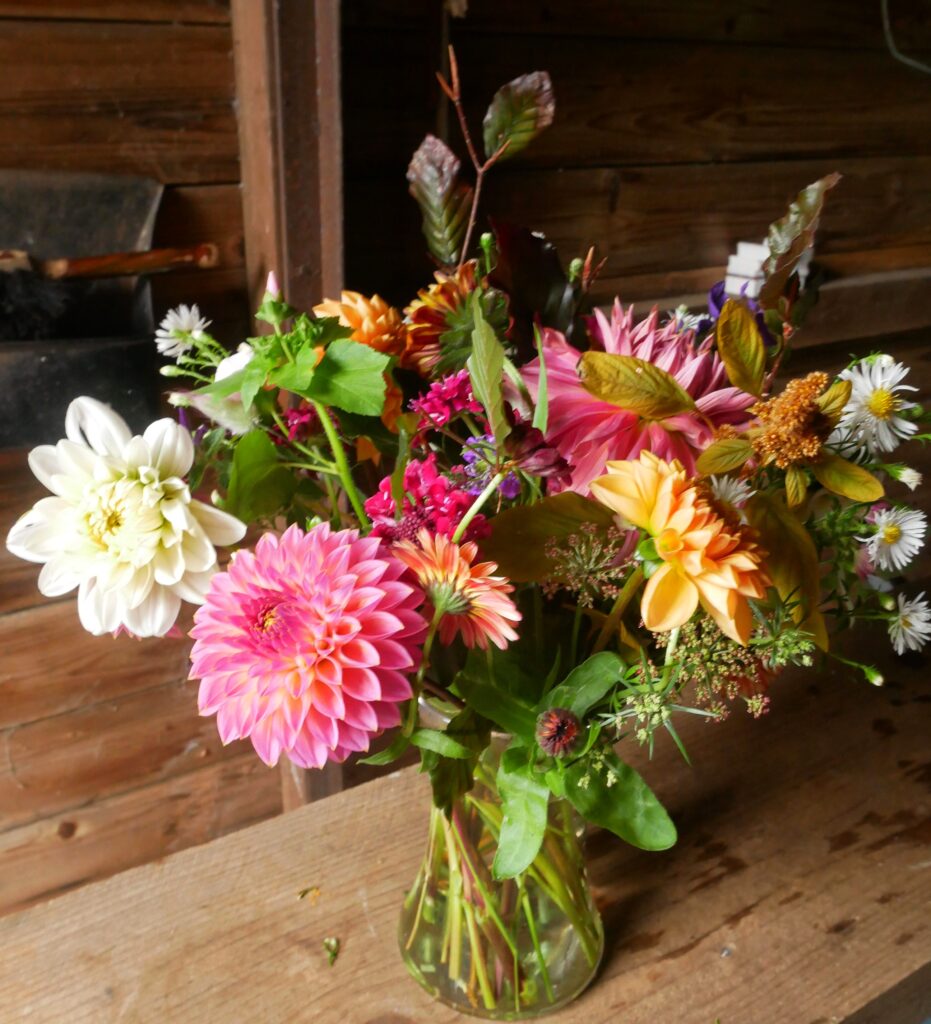
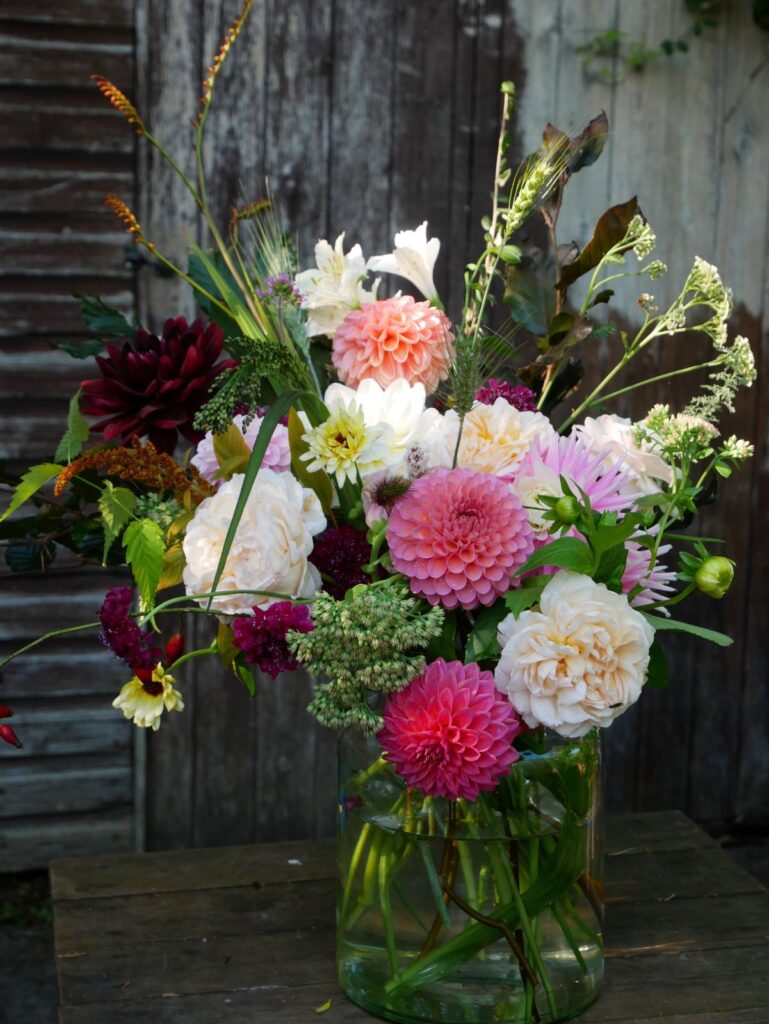
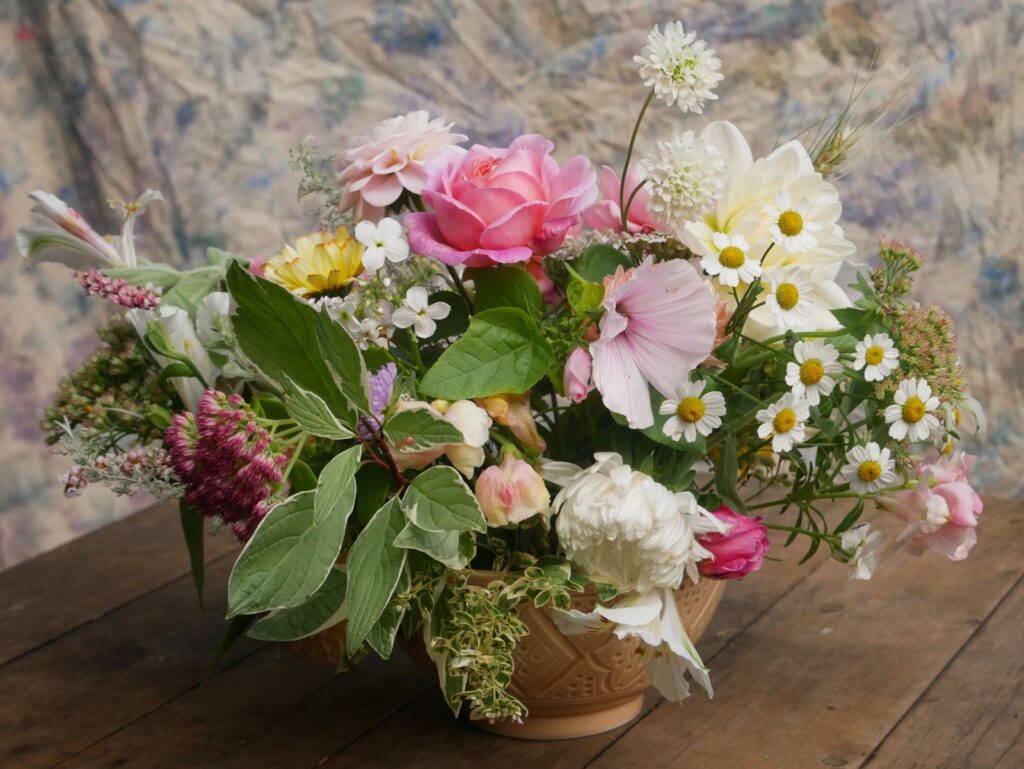
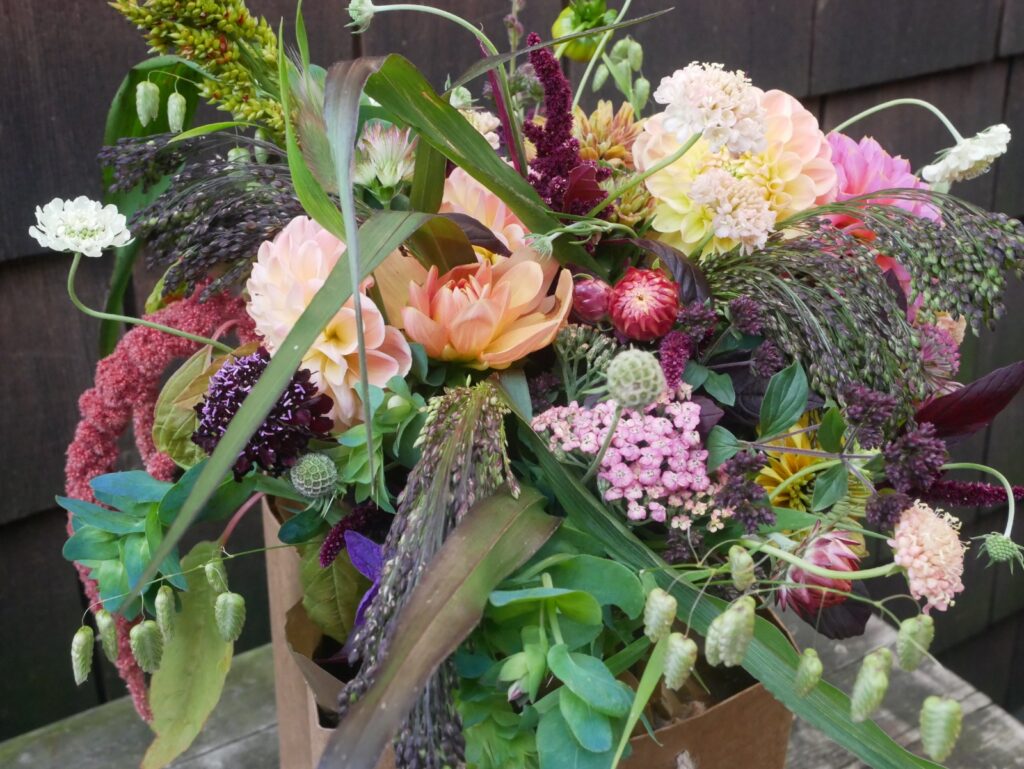
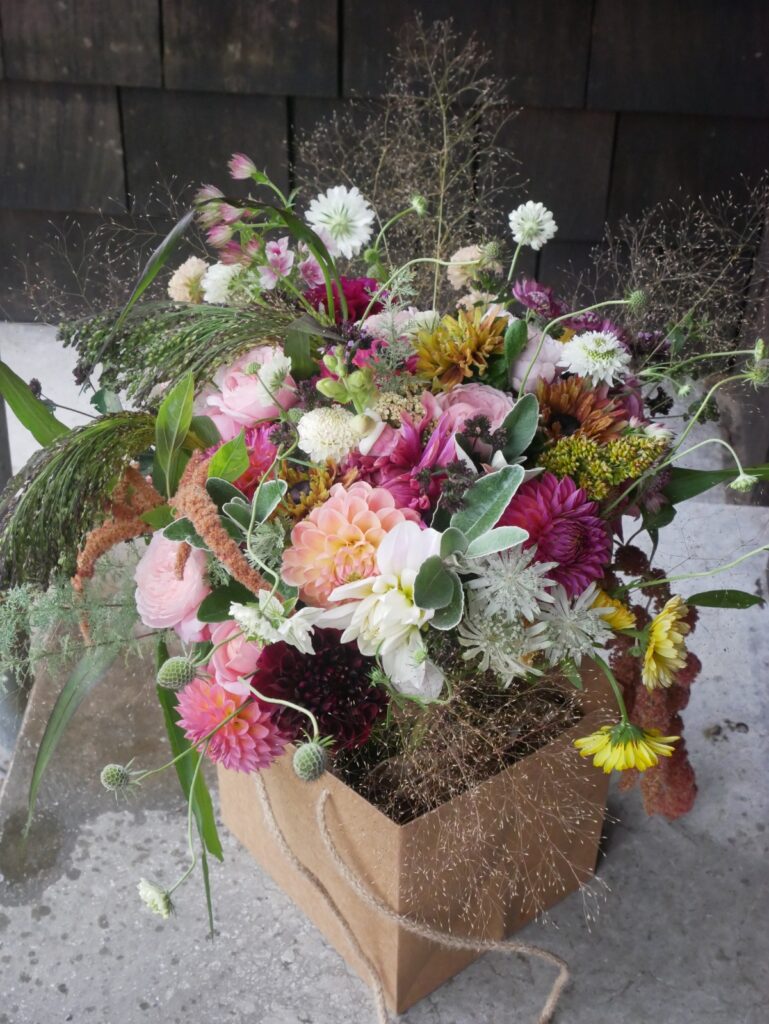
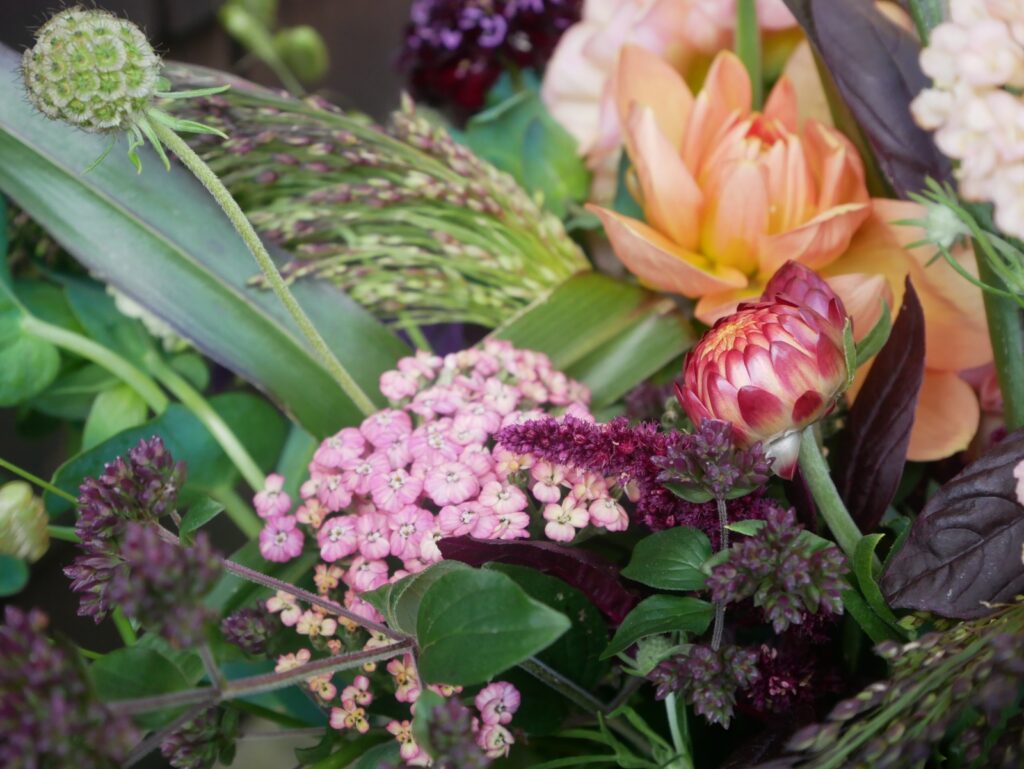
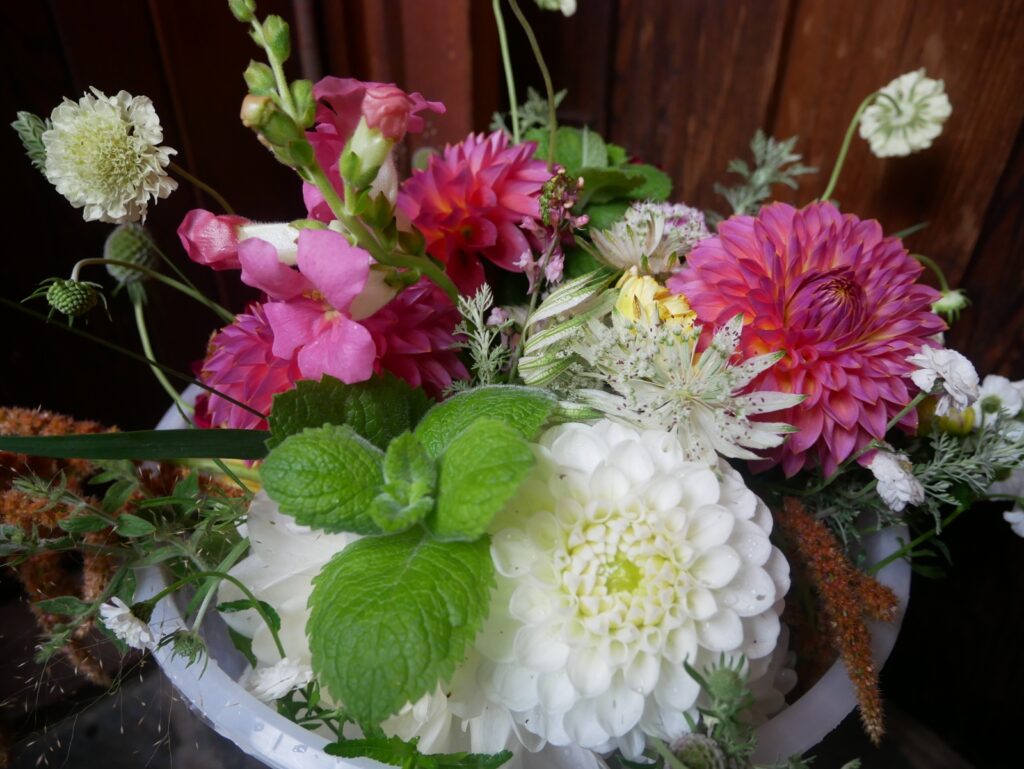
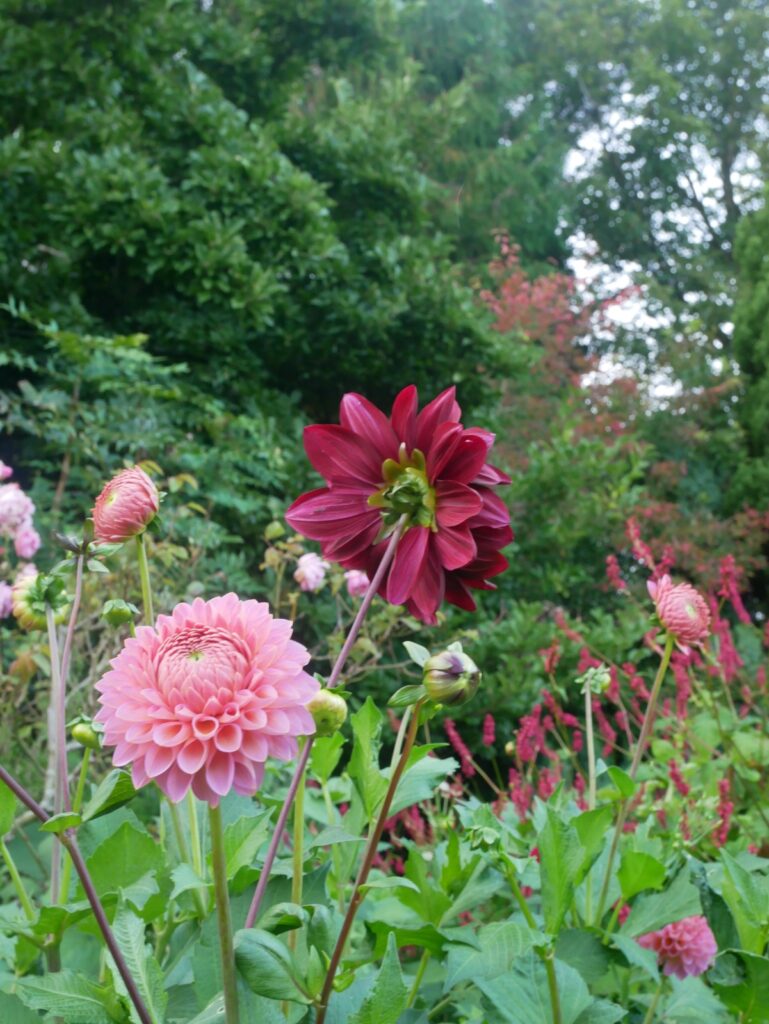
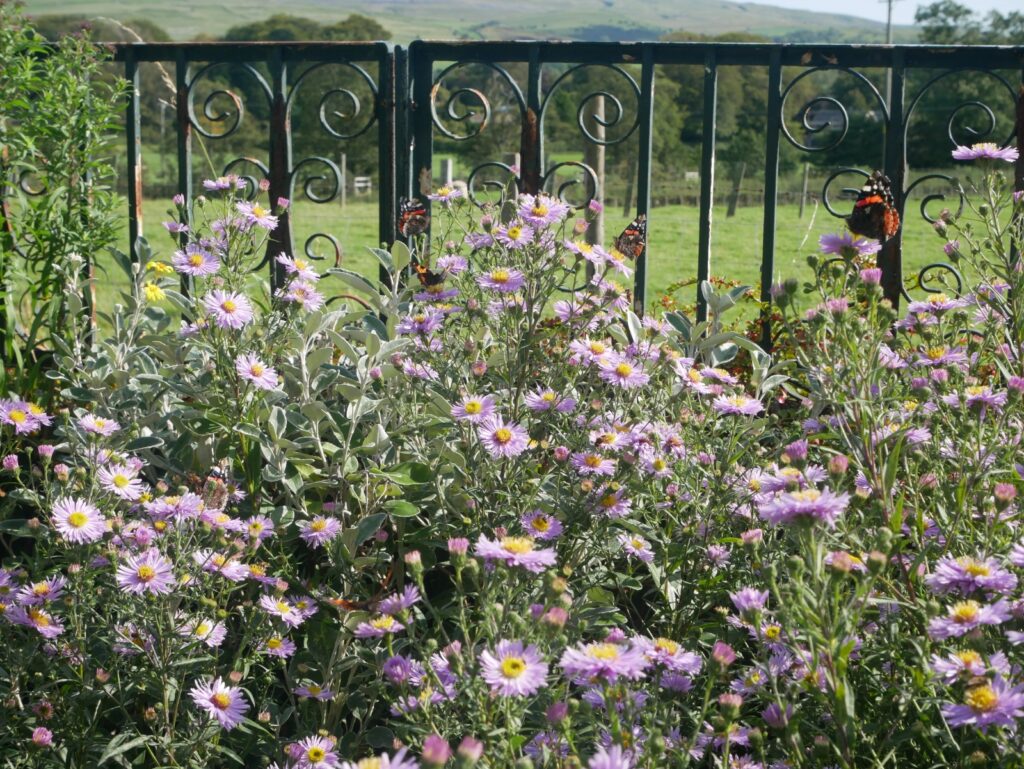
October
Flowers during October may include:
Chrysanthemums, dahlias, evergreen foliage, dried flowers, snapdragons (antirrhinums), alstroemeria, asters, scabious, clary sage, (Salvia Horminium), astrantia, calendula, rudbeckia, grasses, amaranthus.
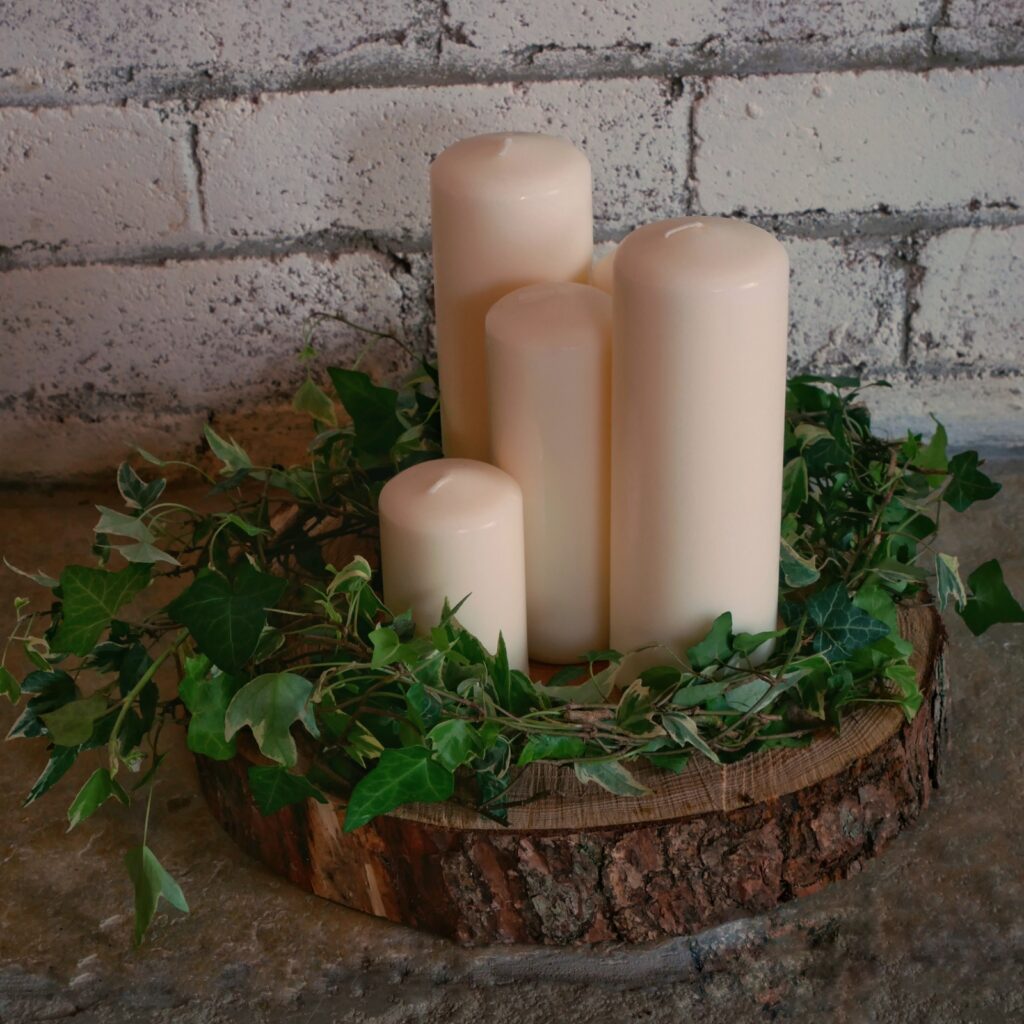
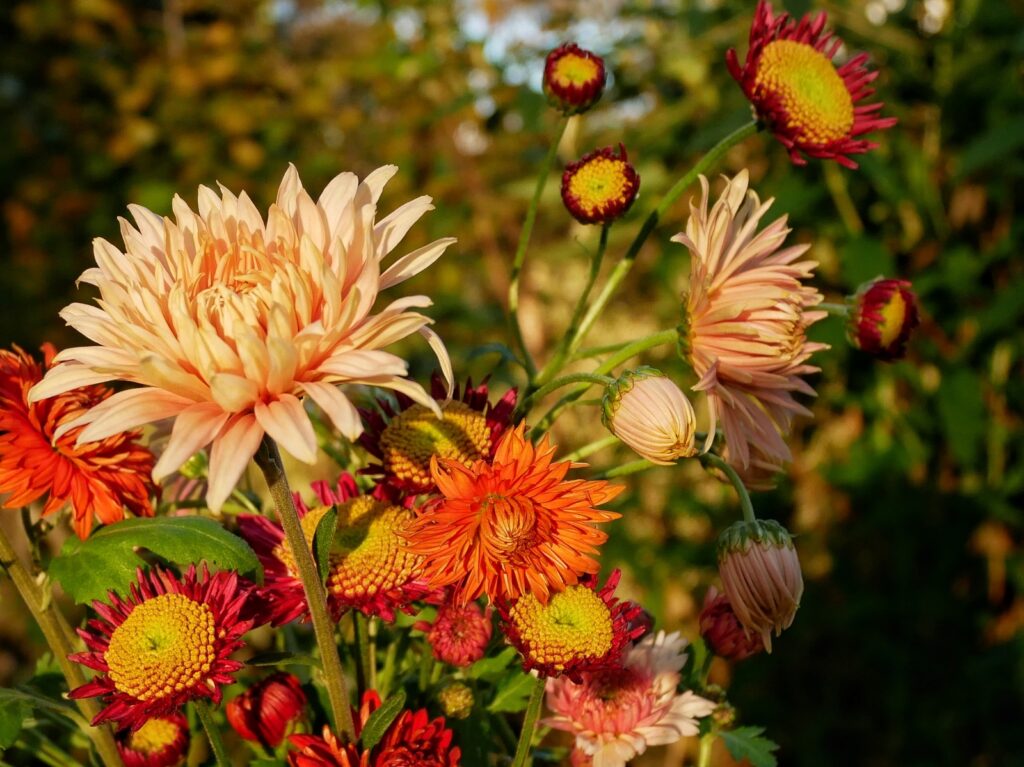
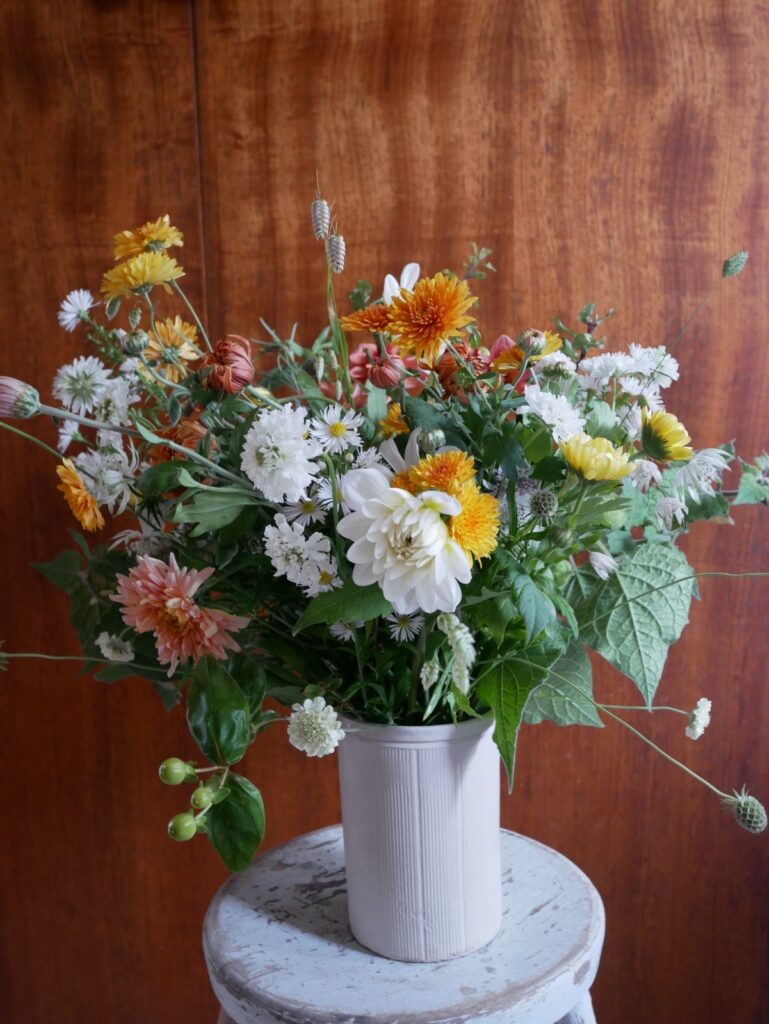
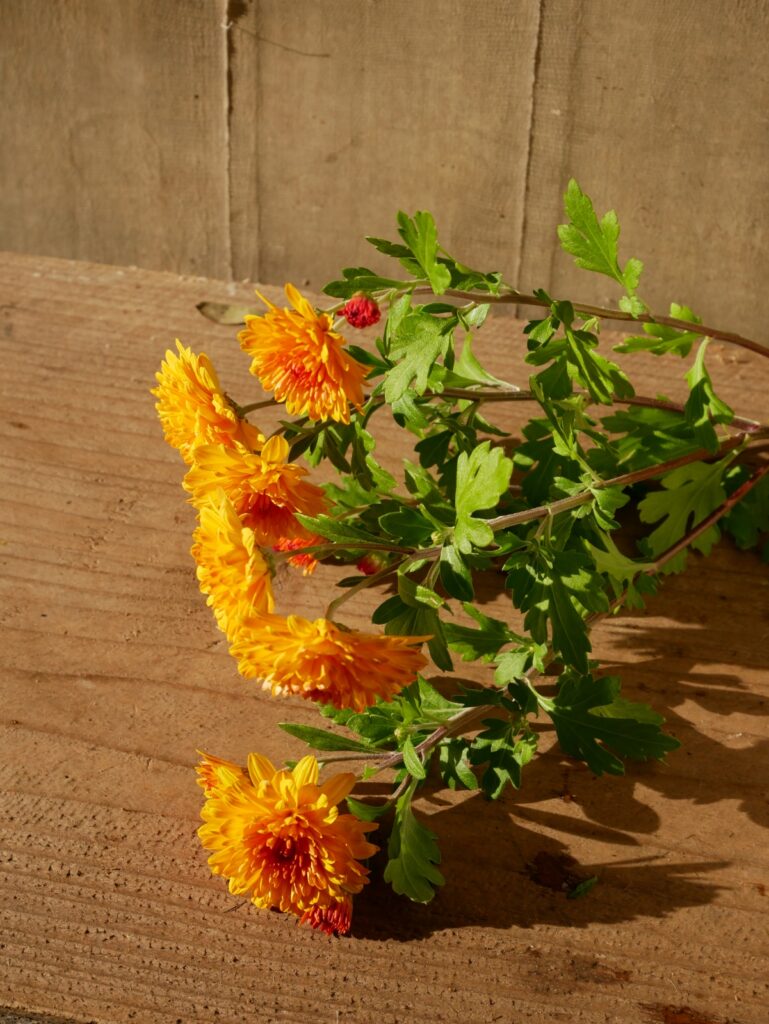
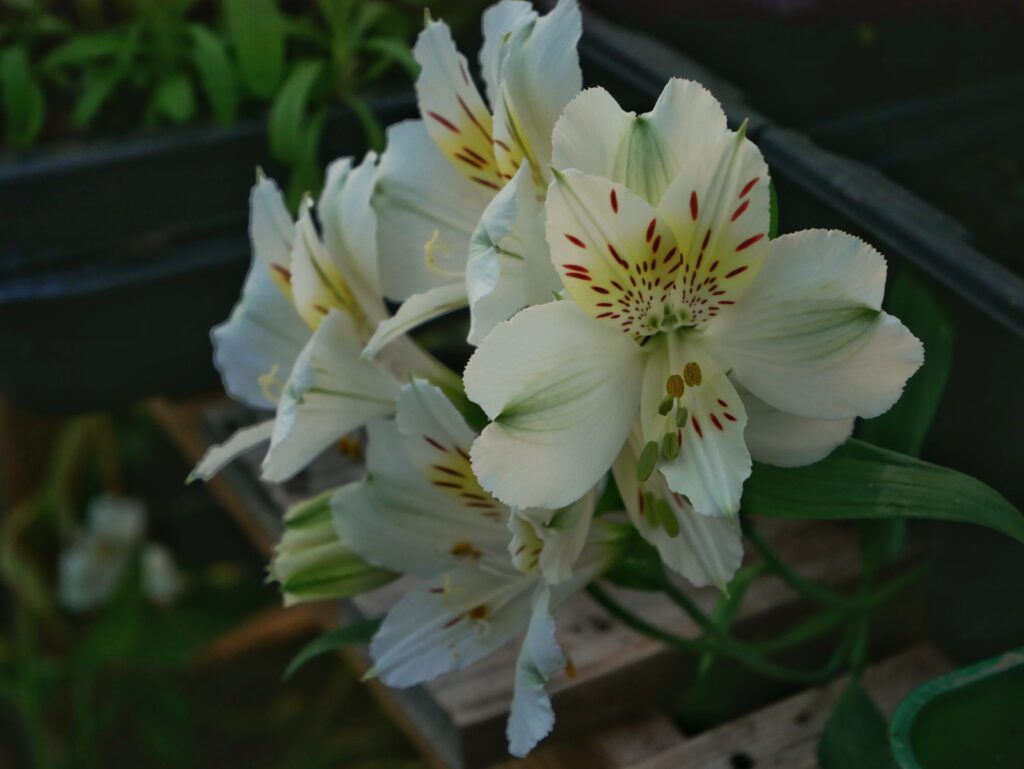
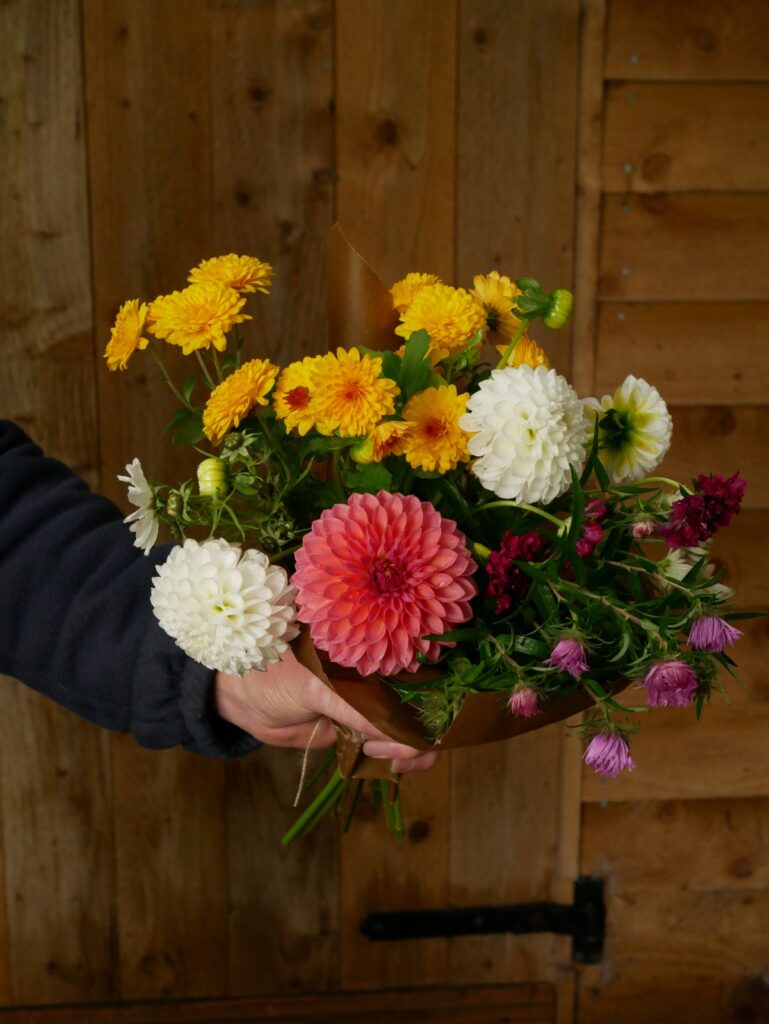
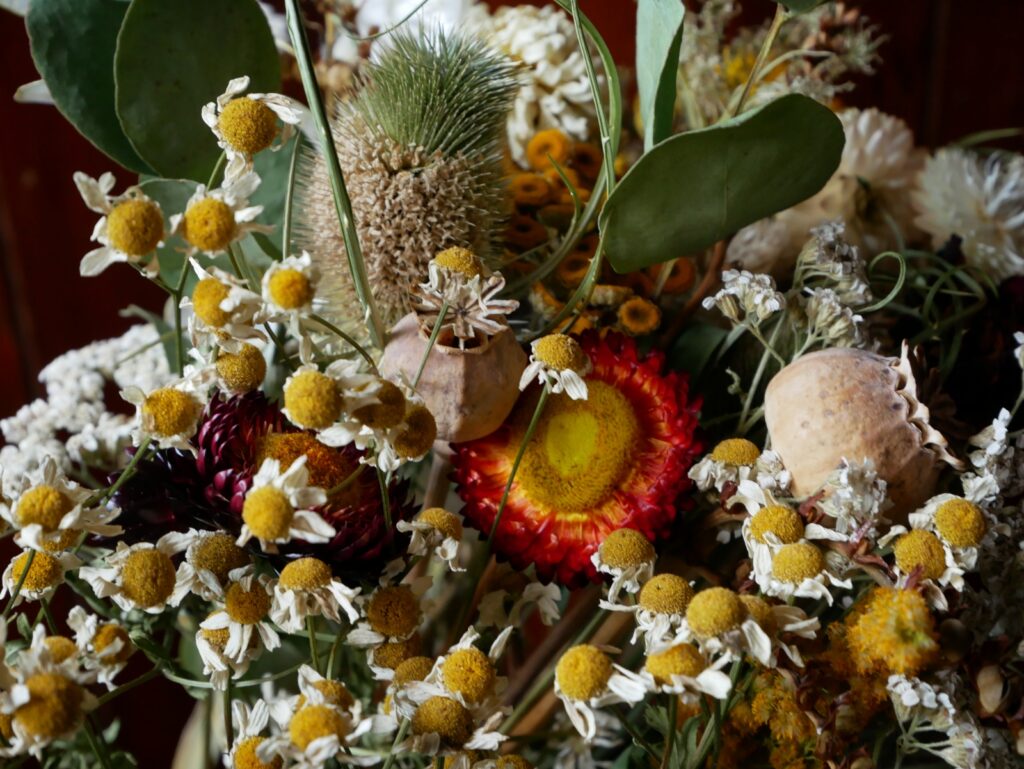
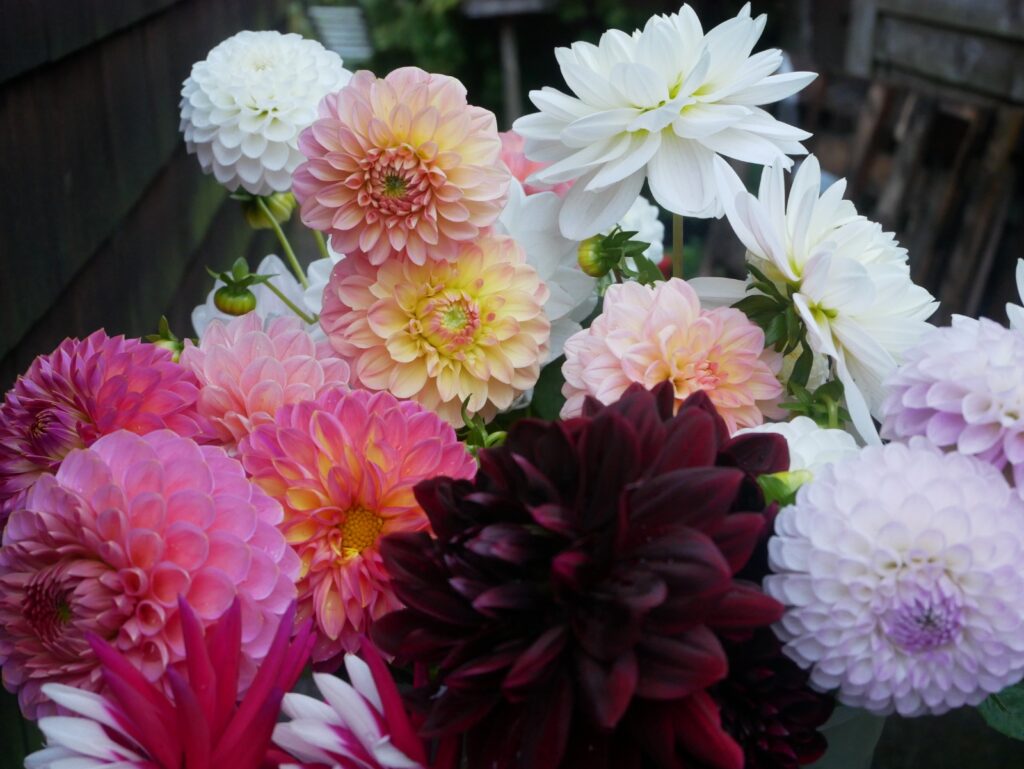
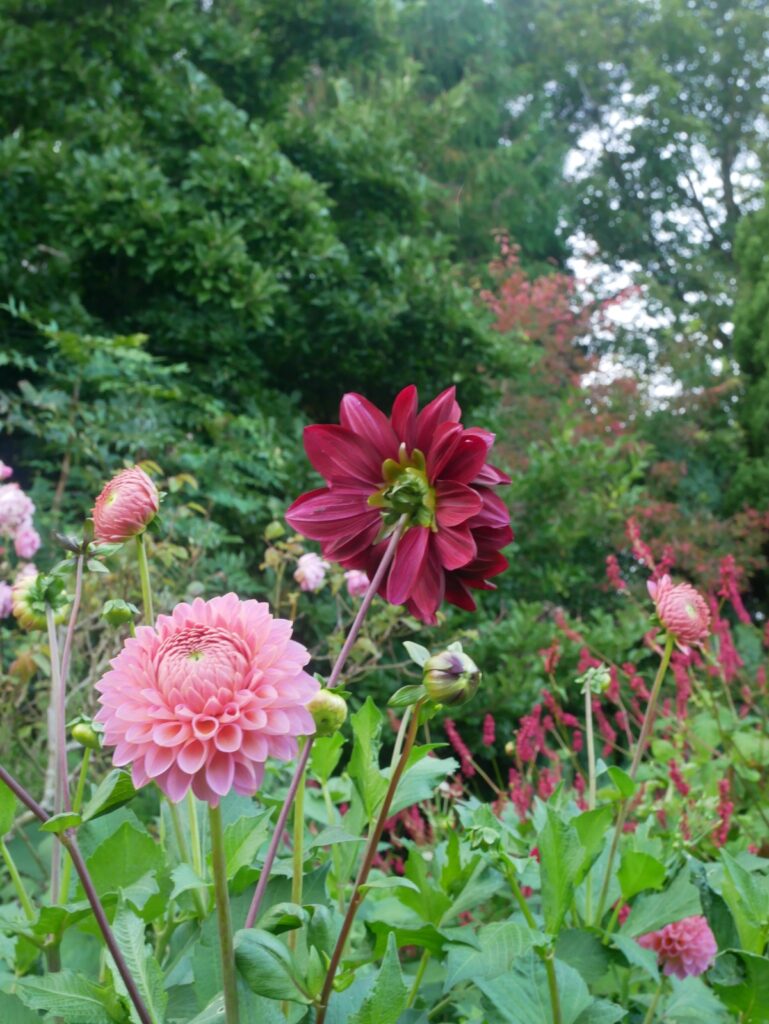
November
So by November, we really are coming to the end of the flowers! The beginning of November is excellent for Chrysanthemums, but a prolonged frosty spell will end them. It’s also a popular time for dried flower weddings and arrangements, lots of colours saved from the summer.
Flowers during November may include:
Chrysanthemums, dahlias, evergreen foliage, dried flowers, blue thistle (eryngium), snapdragons (antirrhinums), alstroemeria.
If you’re reading this in the depths of winter, and want to know when I will have fresh flowers again, please sign up to my email list, the link is at the foot of the page.
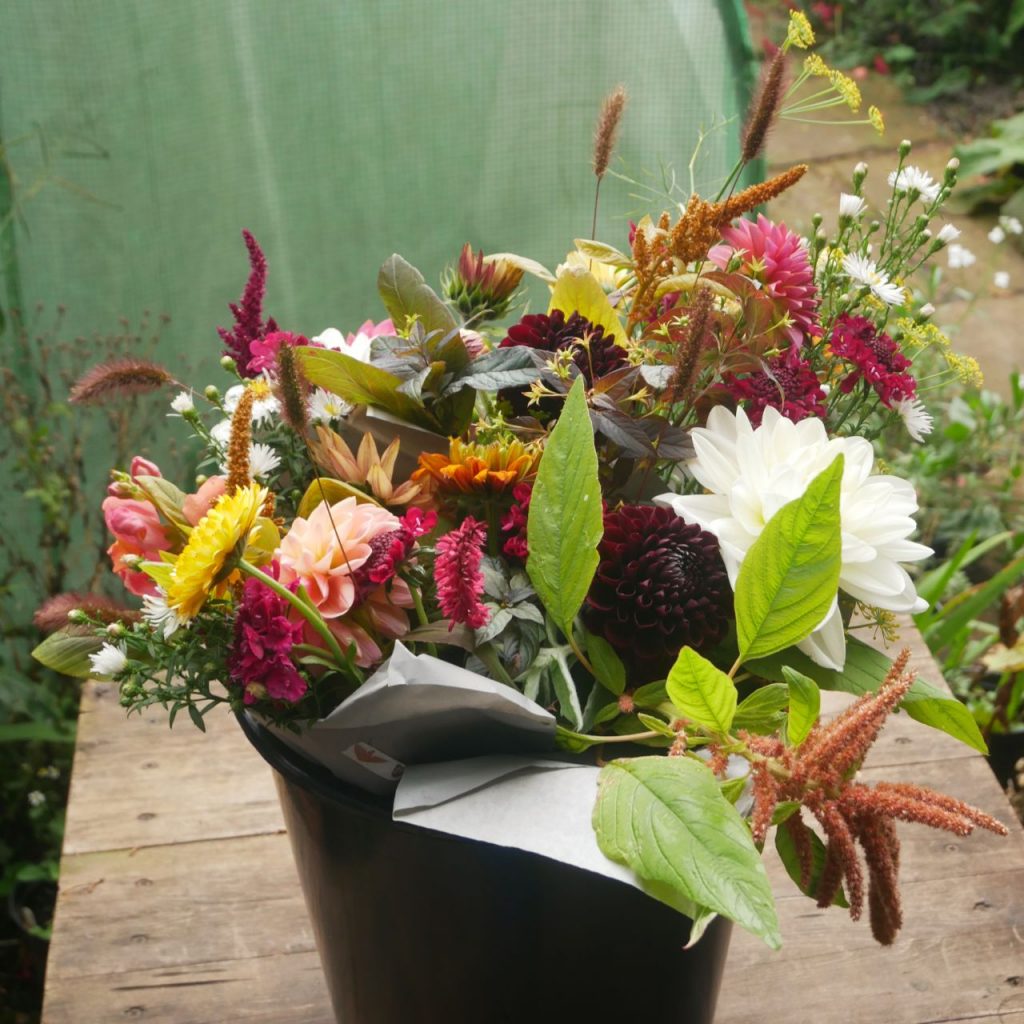
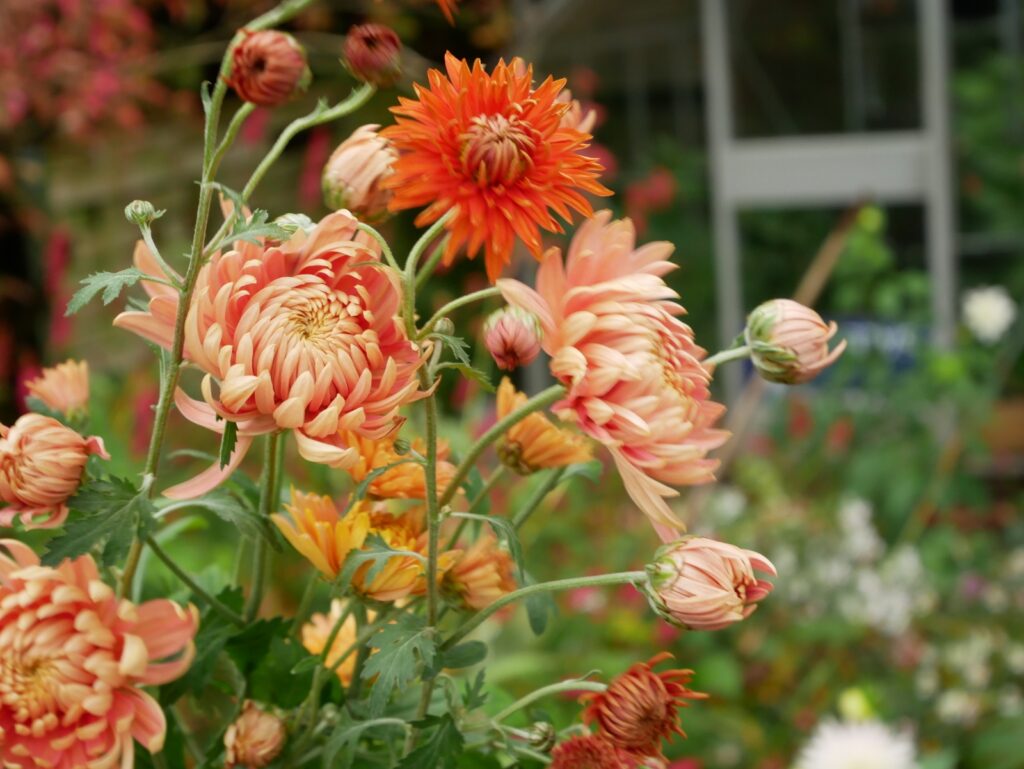

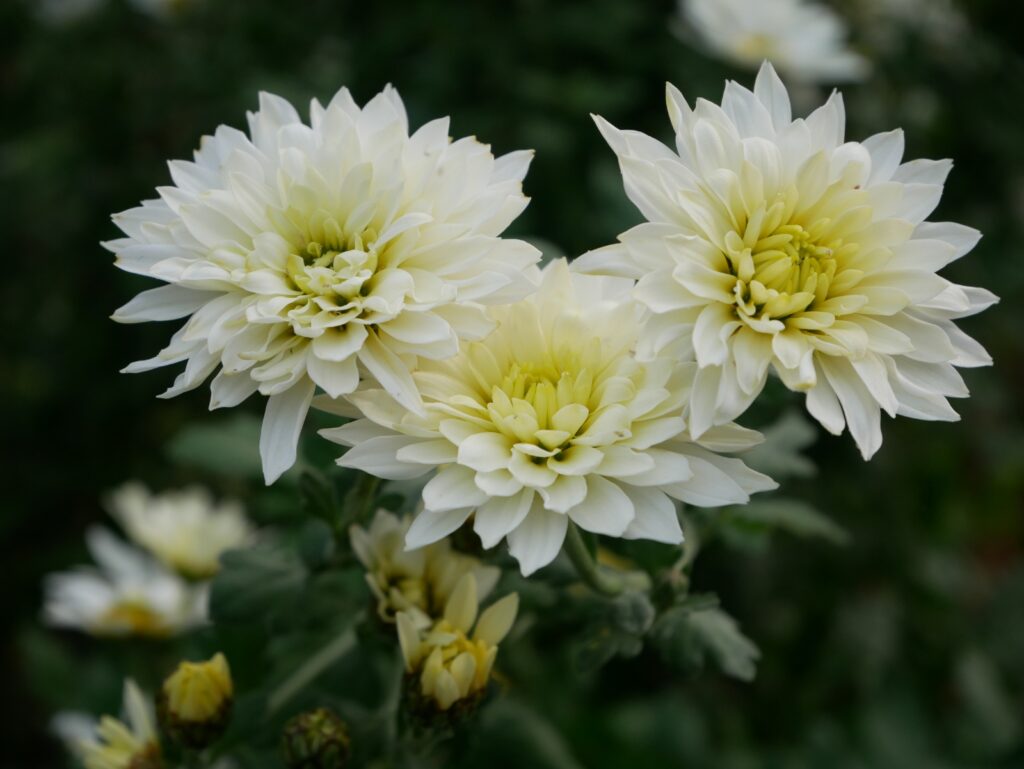
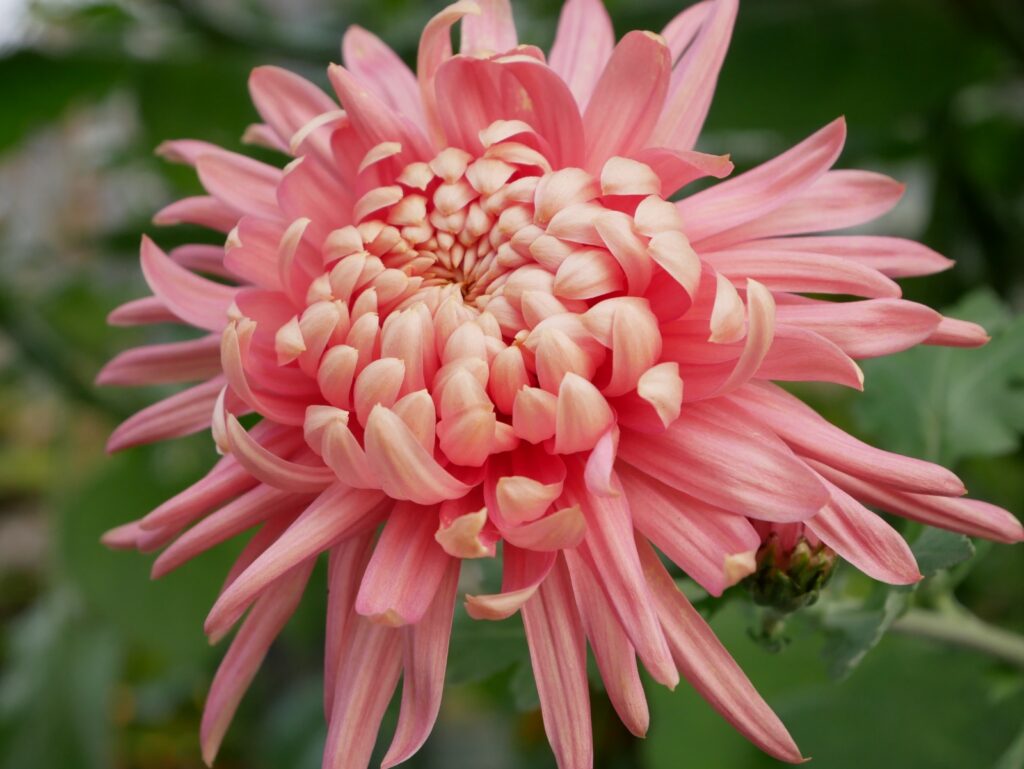
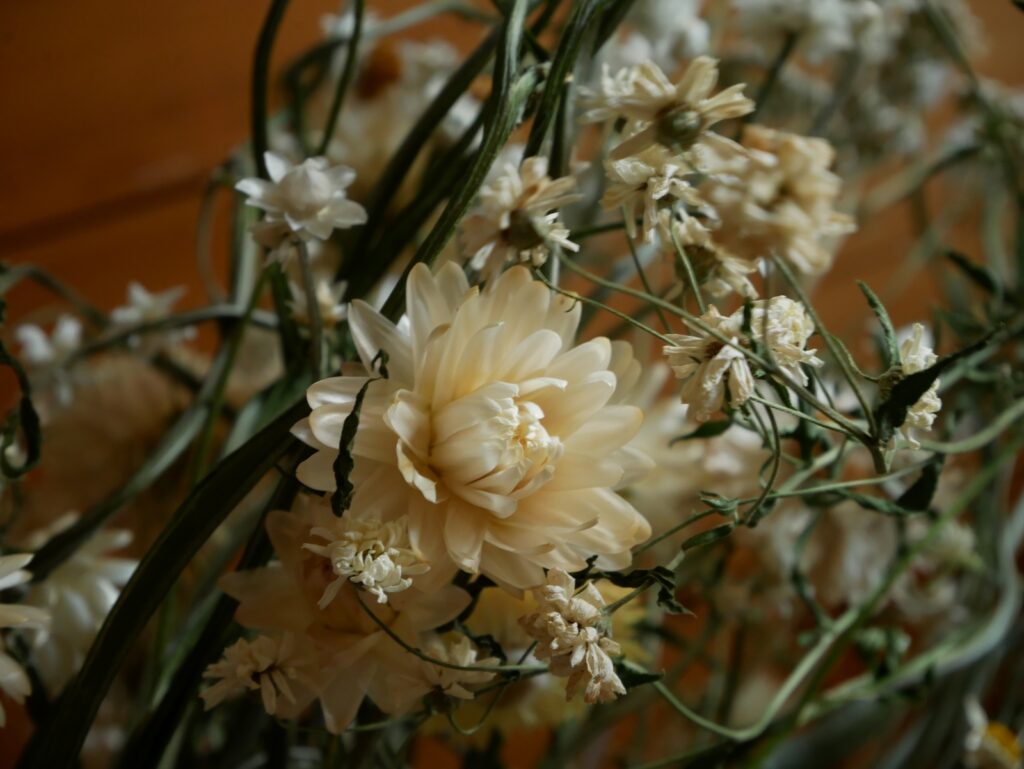
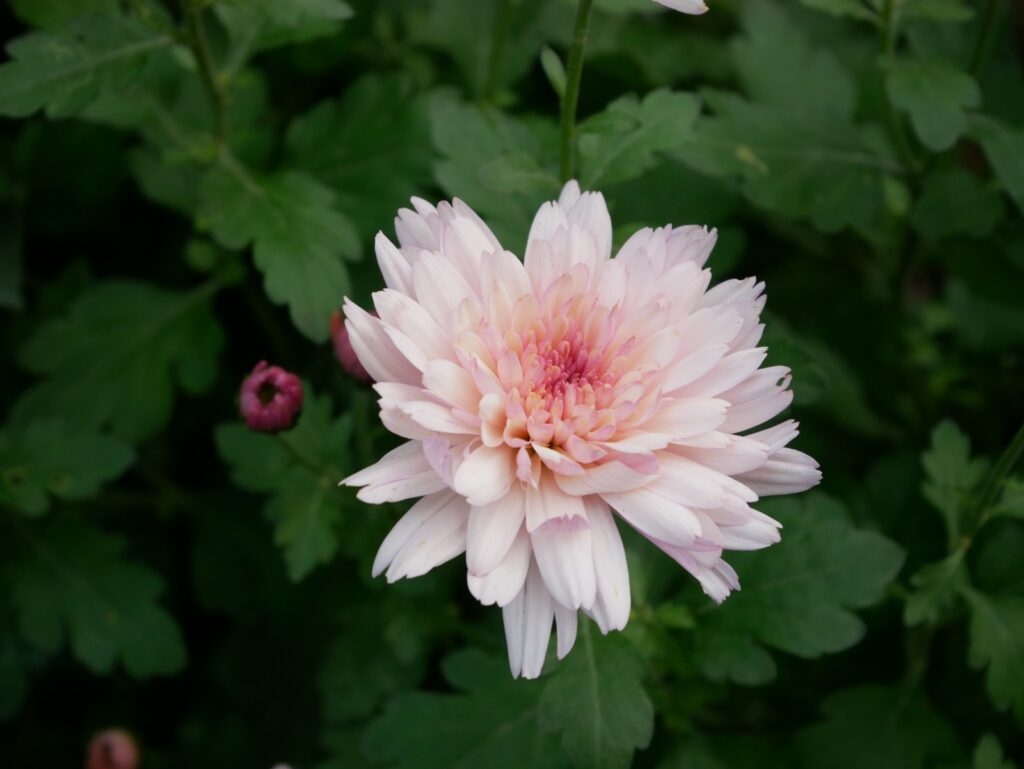
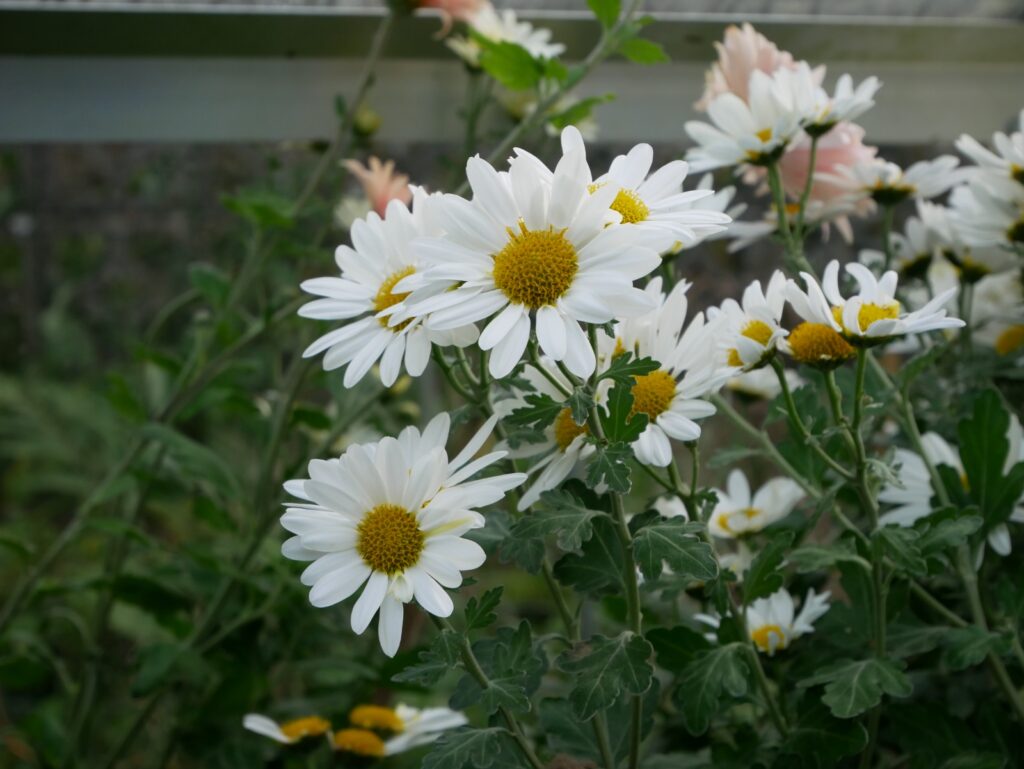
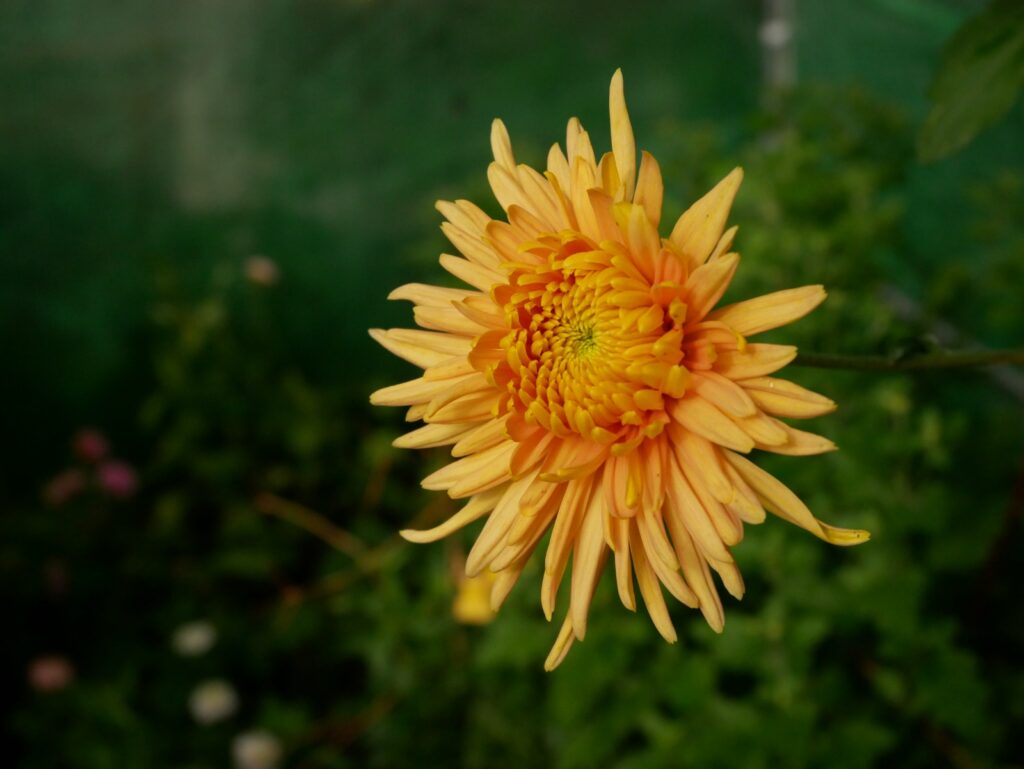
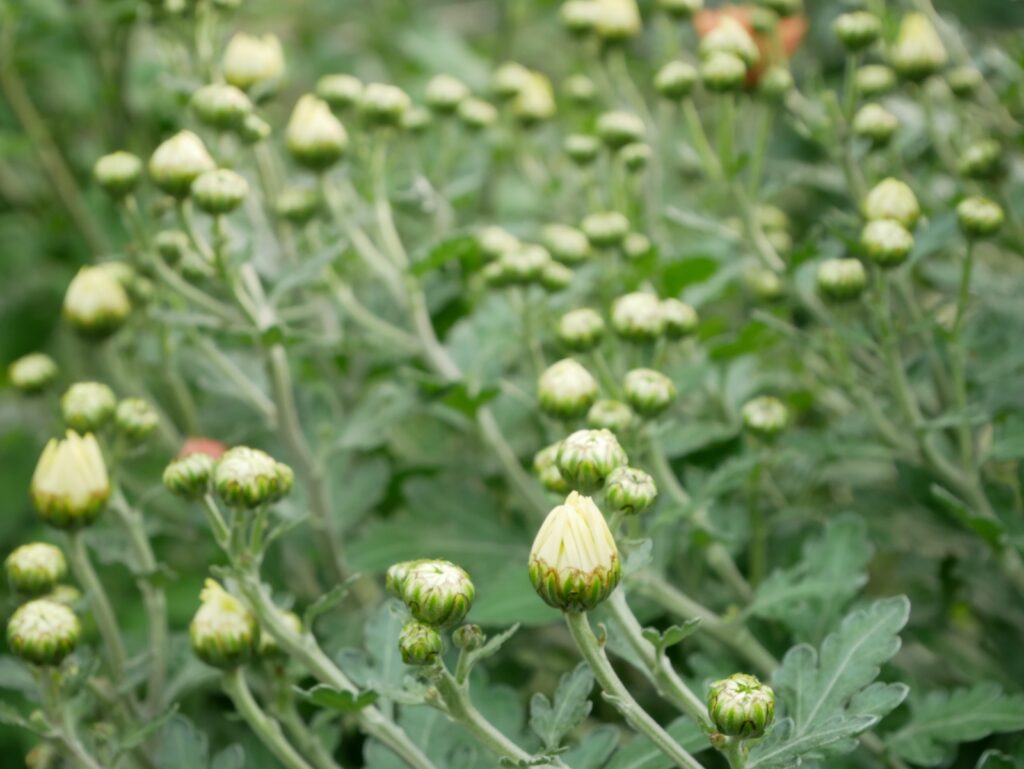
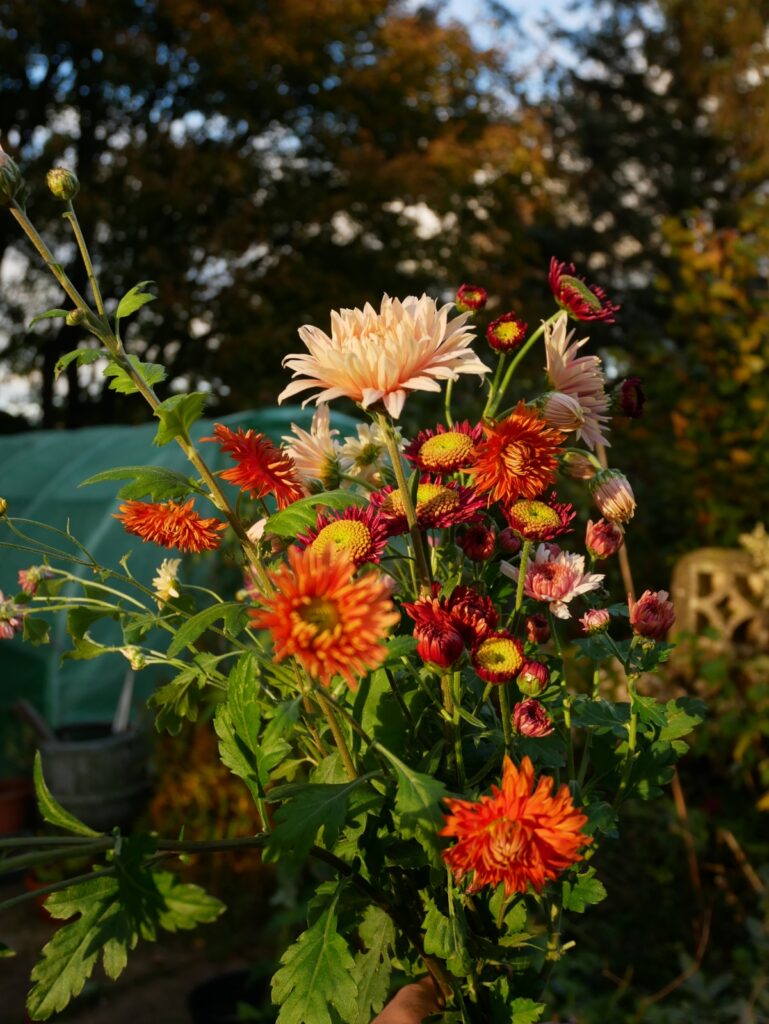
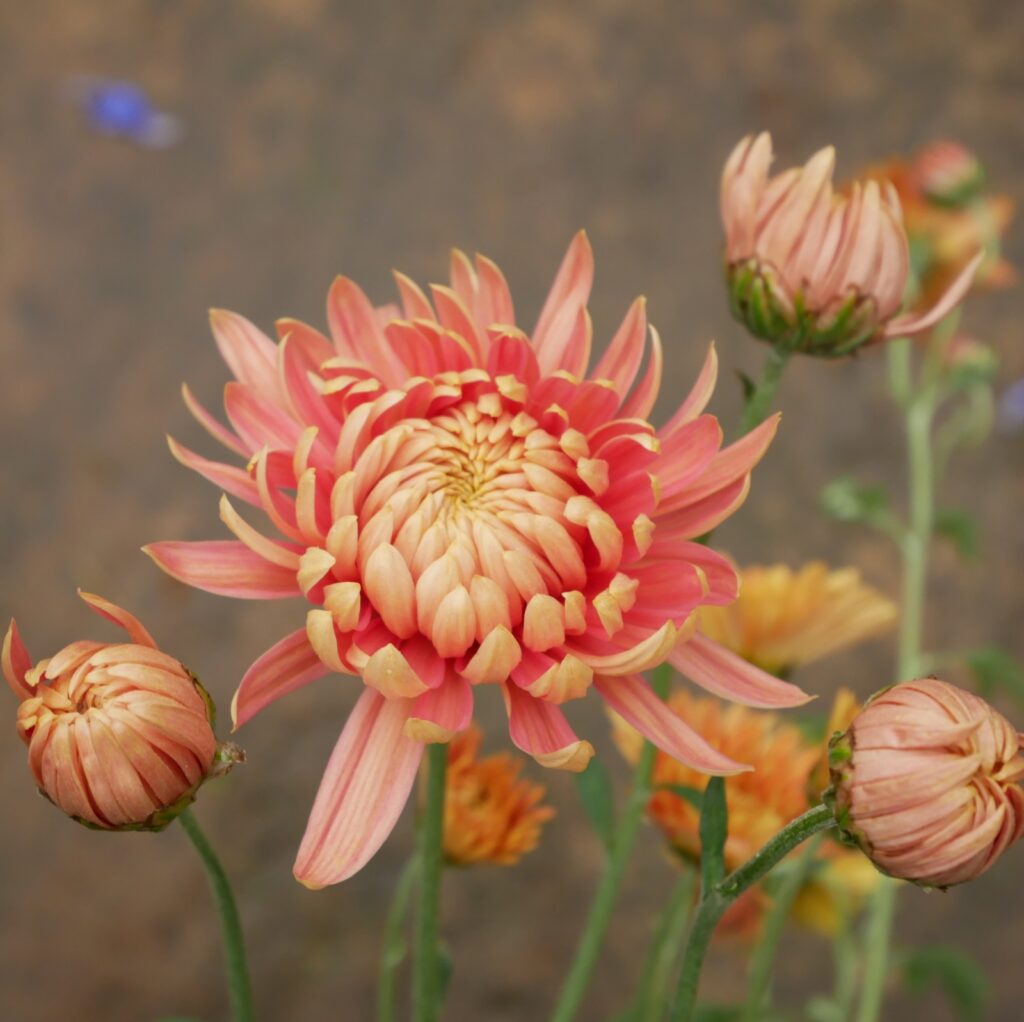
December
Christmas wreaths! I use a lot of different evergreen foliage in December – not all green! A lot can be variegated, giving white and green, or yellow and green. Also colour can be given from rose hips, coloured twigs, and some winter flowering shrubs. Bulbs can be forced, such as paperwhite narcissi. I also dry a lot of flowers over the summer to add to wreaths, winter wedding bouquets, buttonholes and table decorations. I love an indoor wreath made from the silvery pods of dried honesty.
Flowers and foliage during December may include:
Narcissi paper whites, holly, eucalyptus, viburnum, other evergreen foliage, such as ivy, and pittosporum, coloured twigs from willow and cornus and lots of dried flowers such as helichrysum, astrantia, honesty pods.
